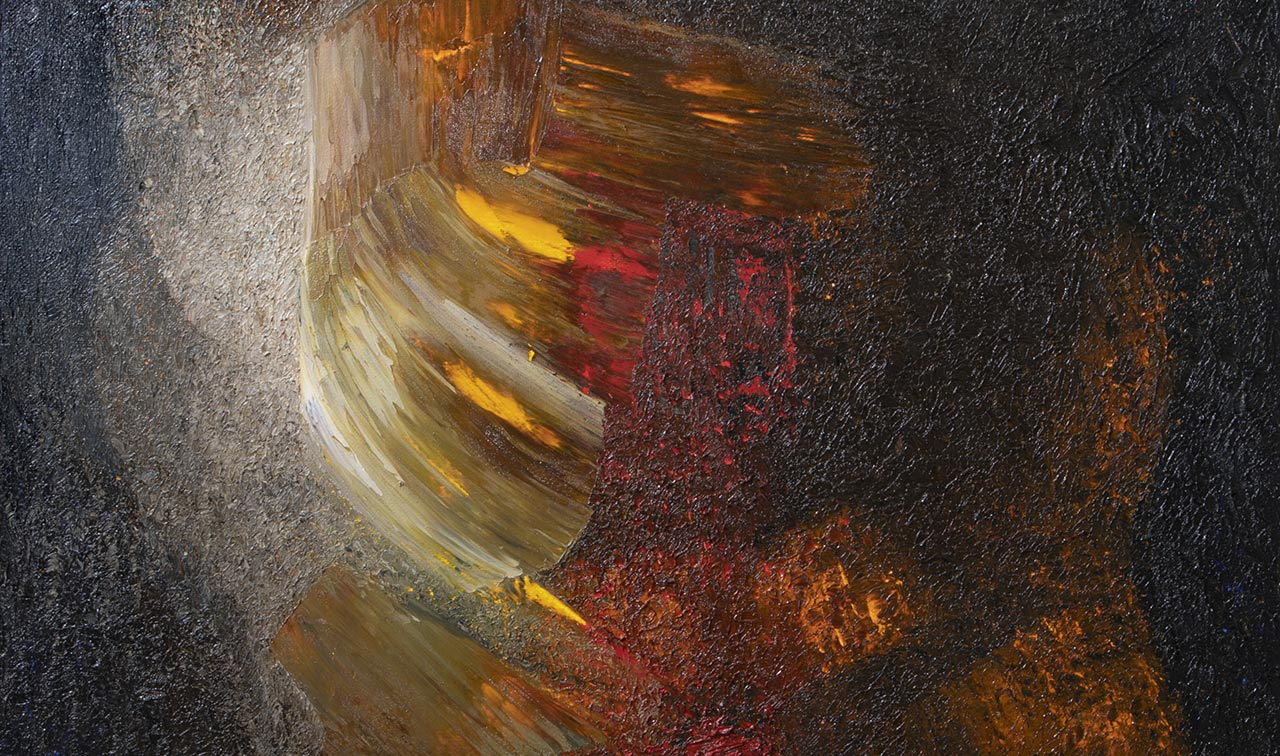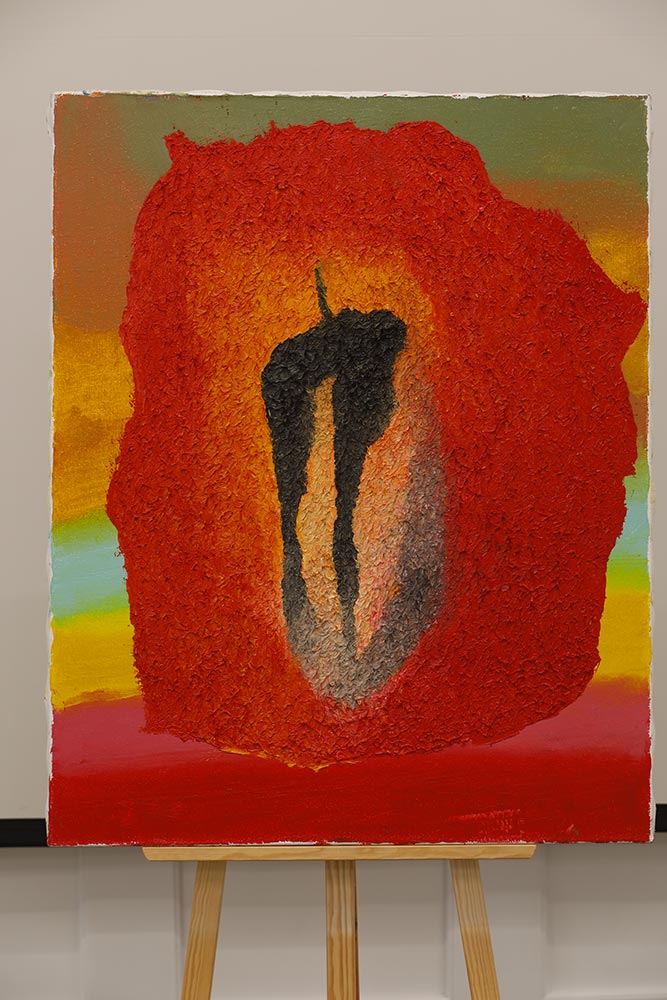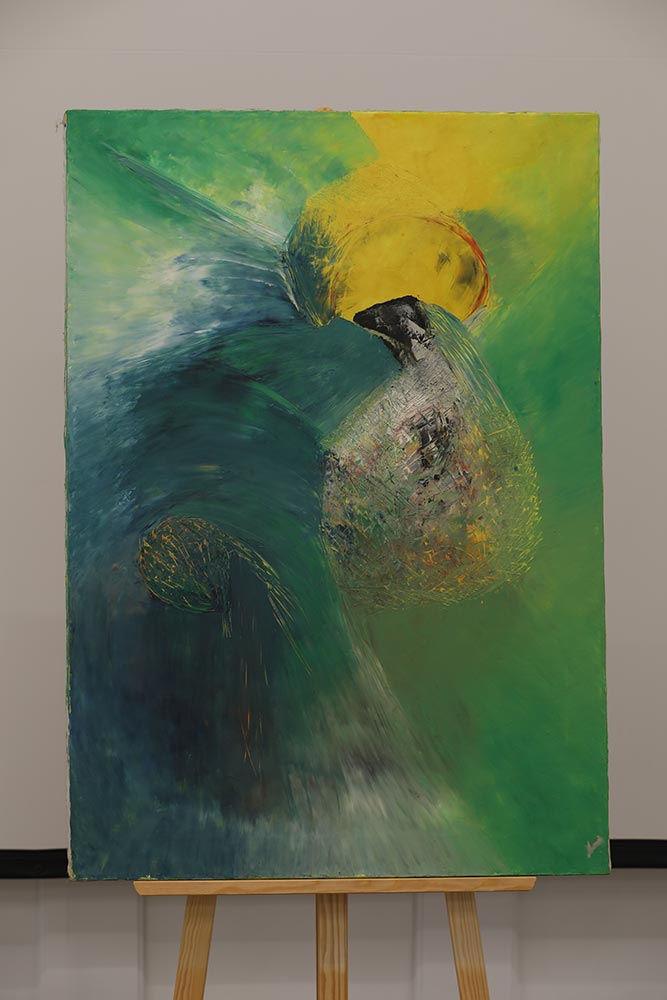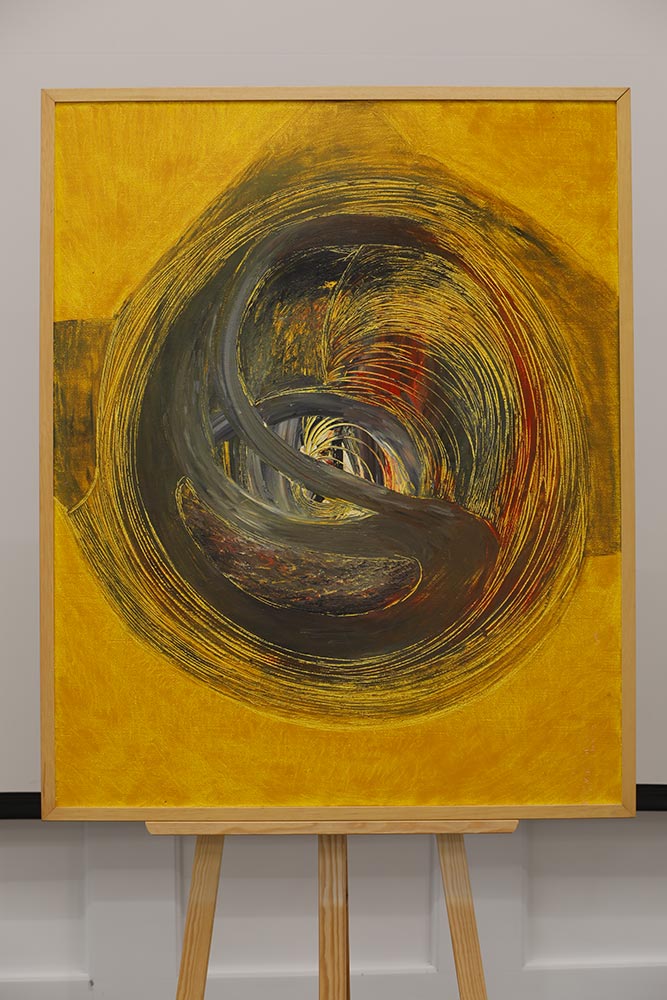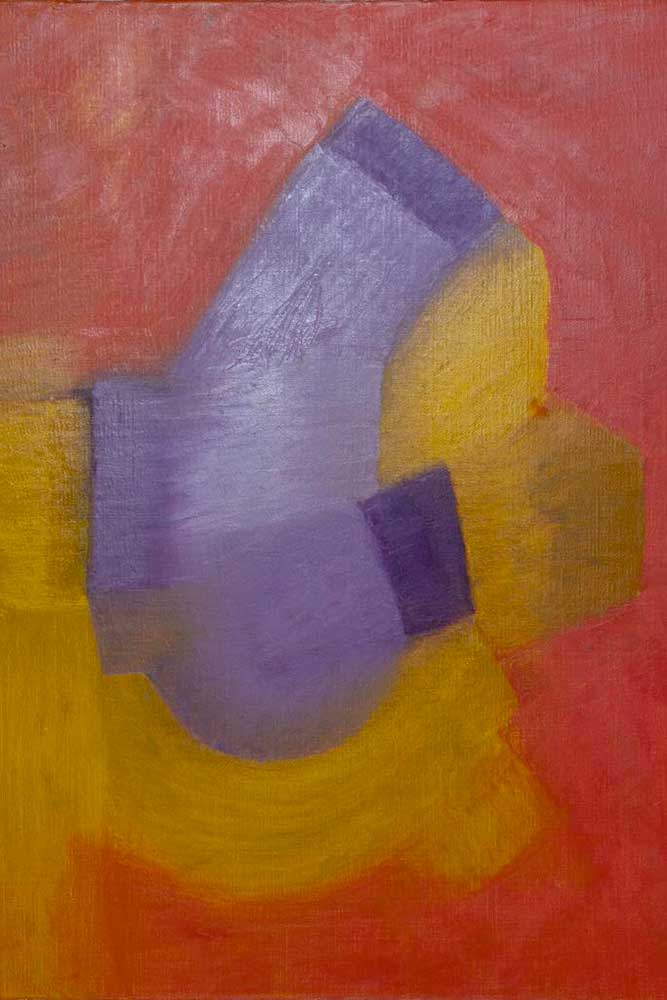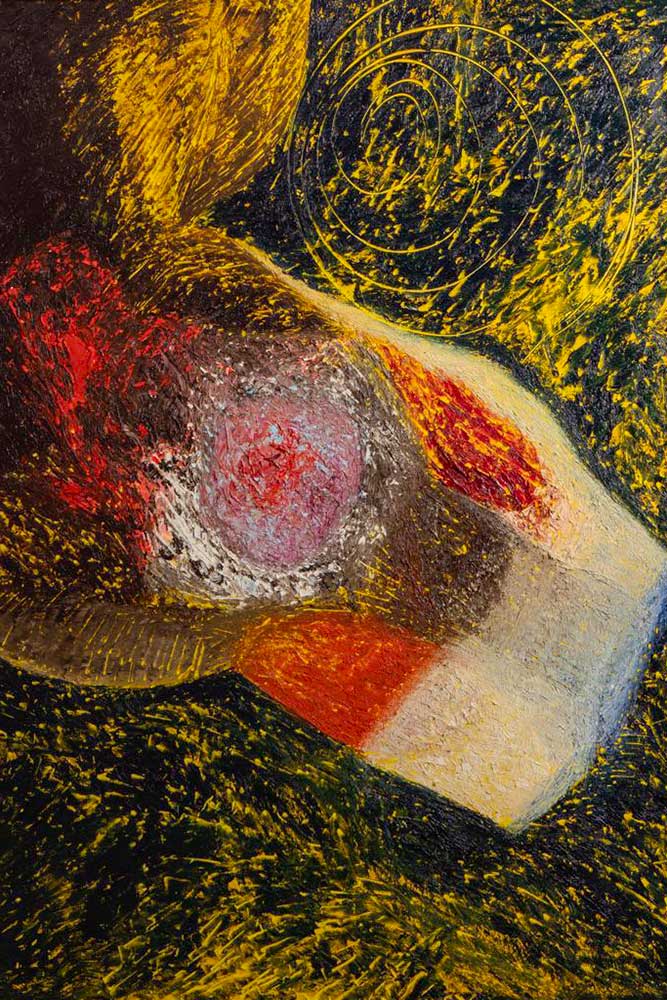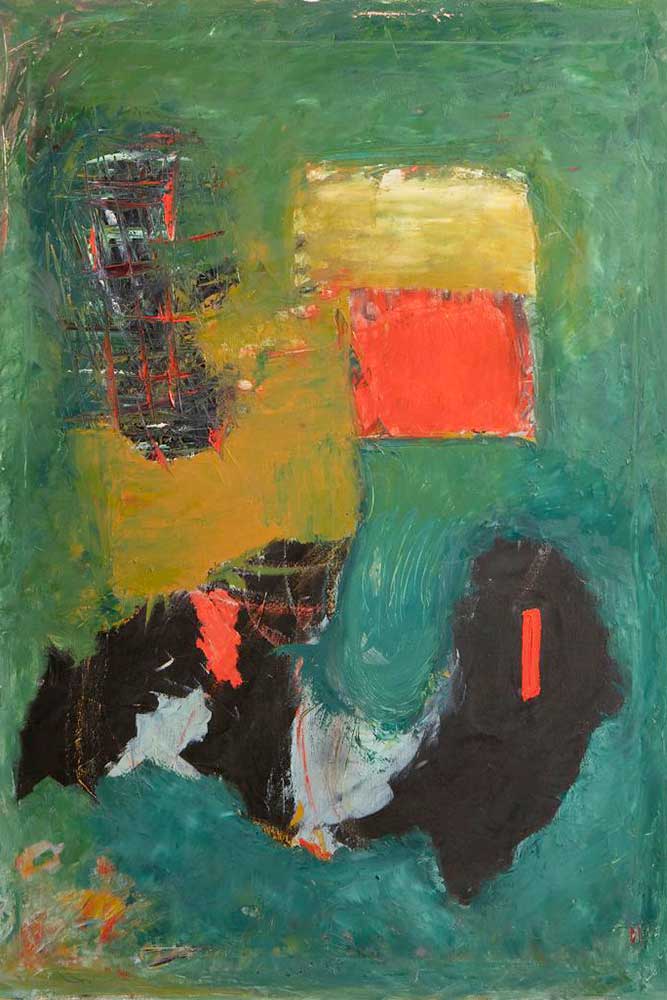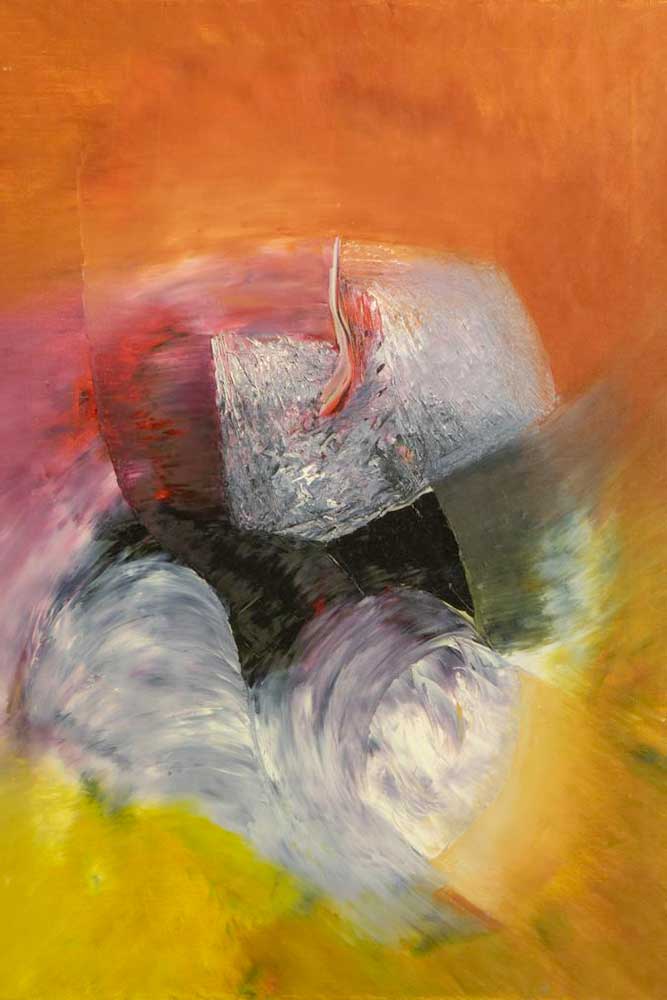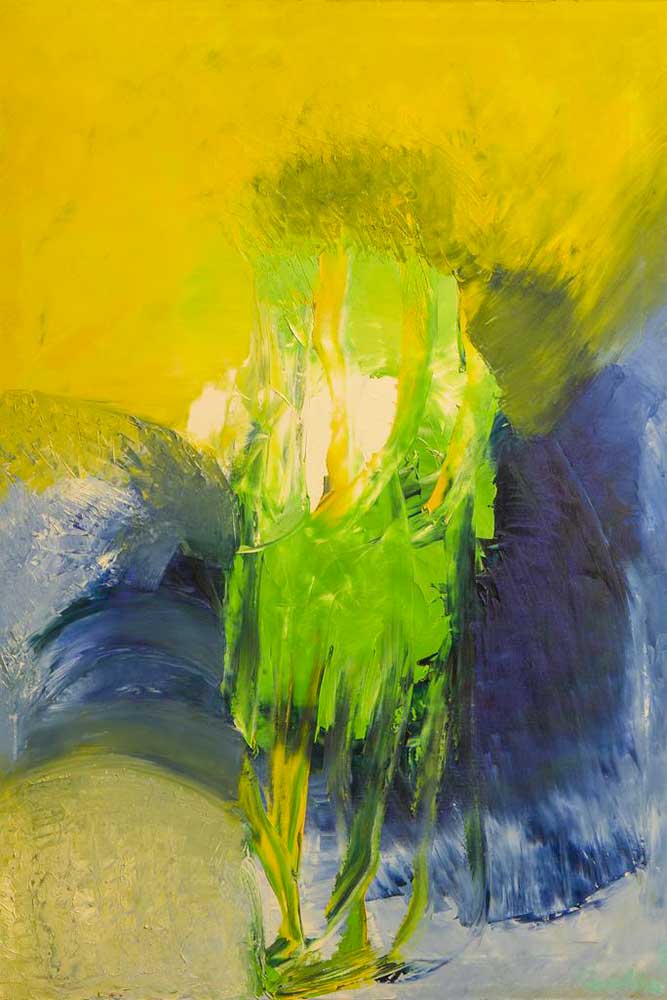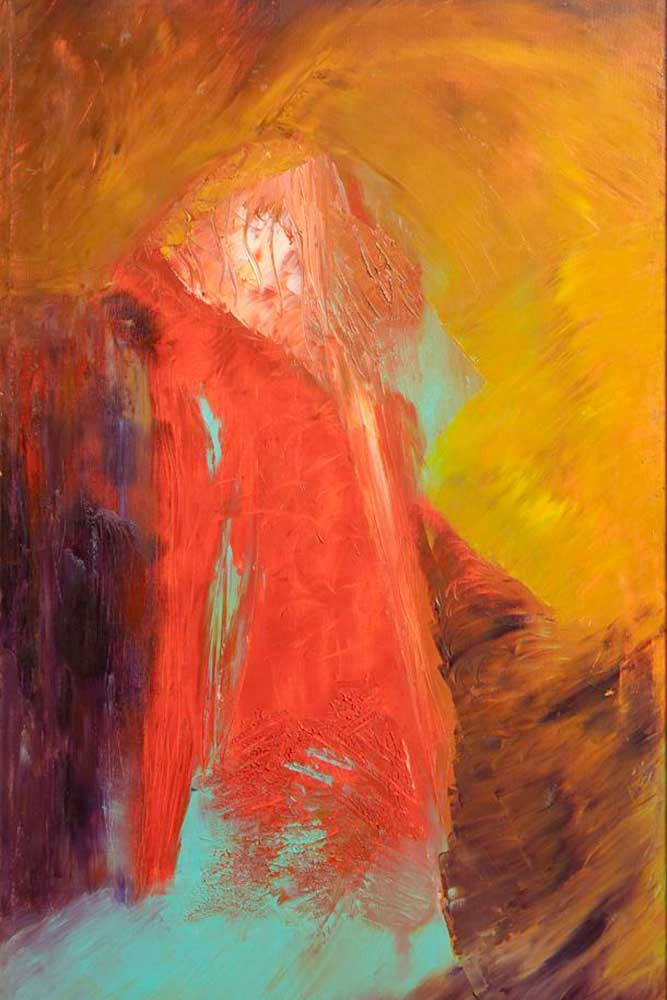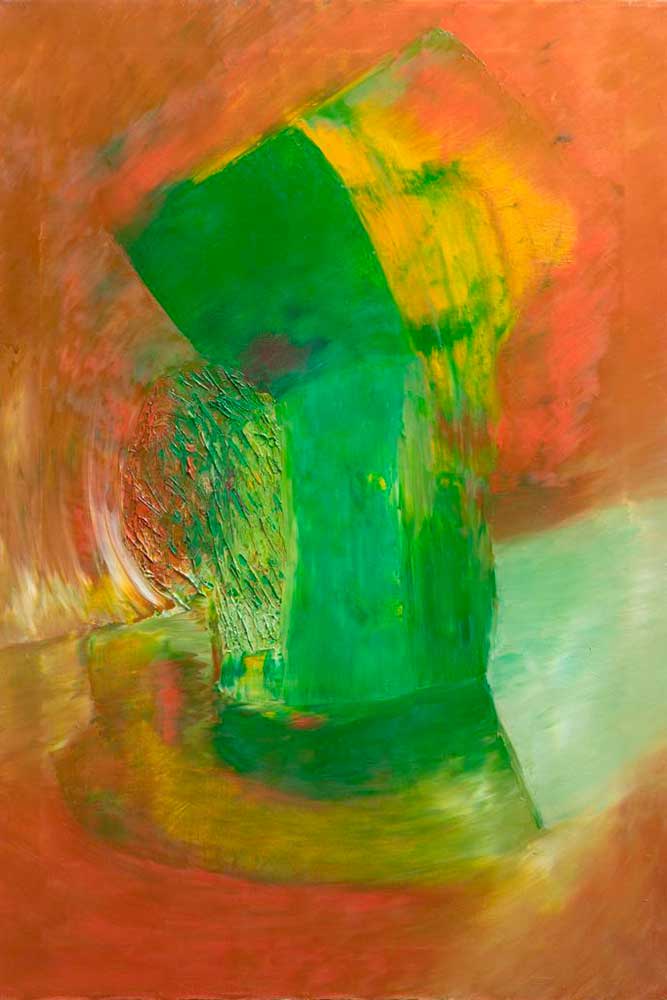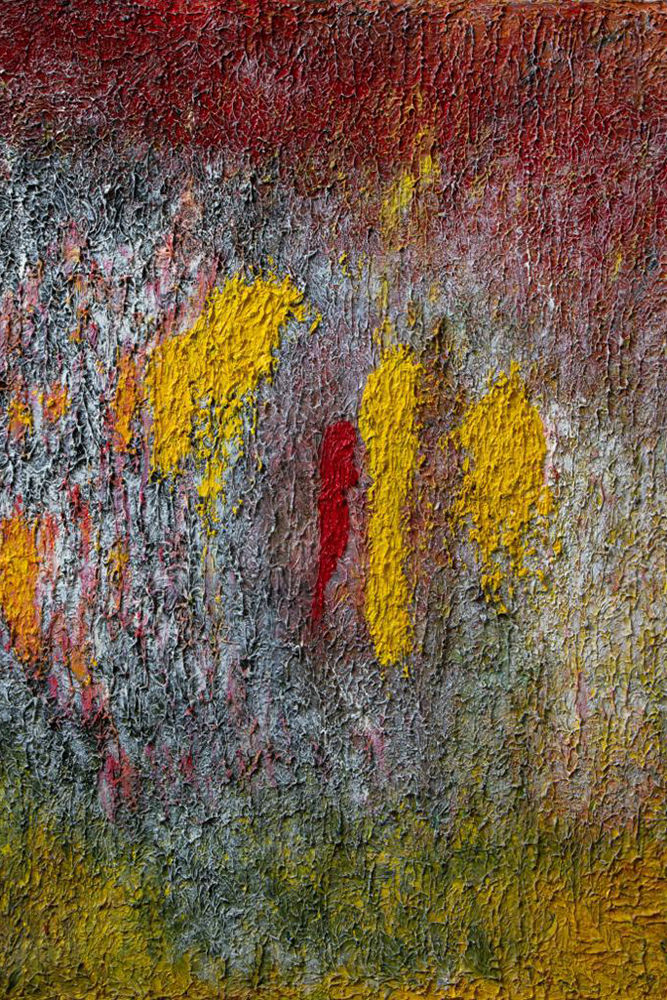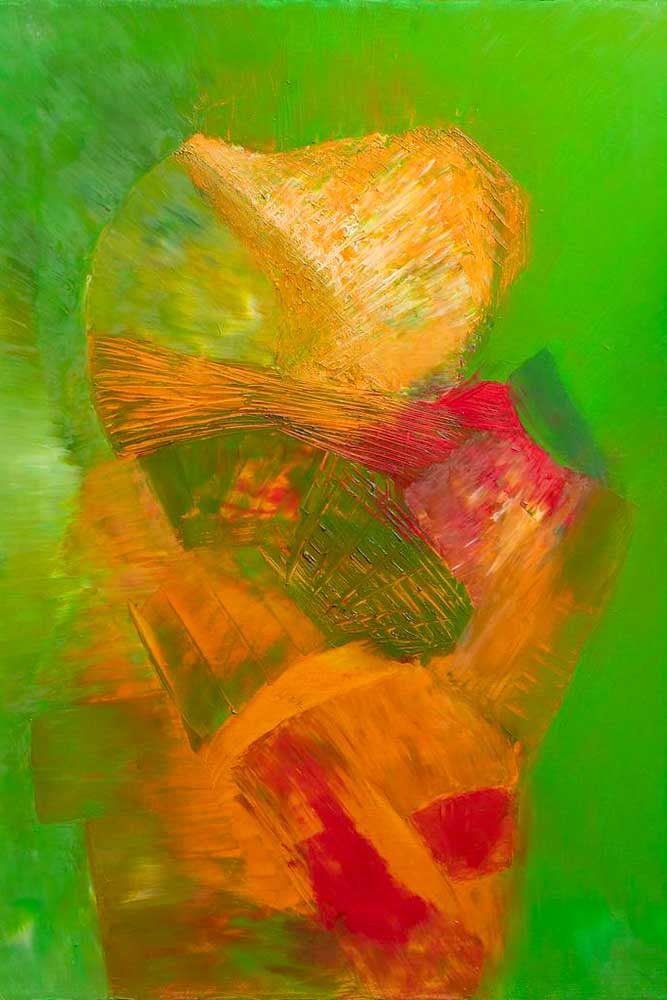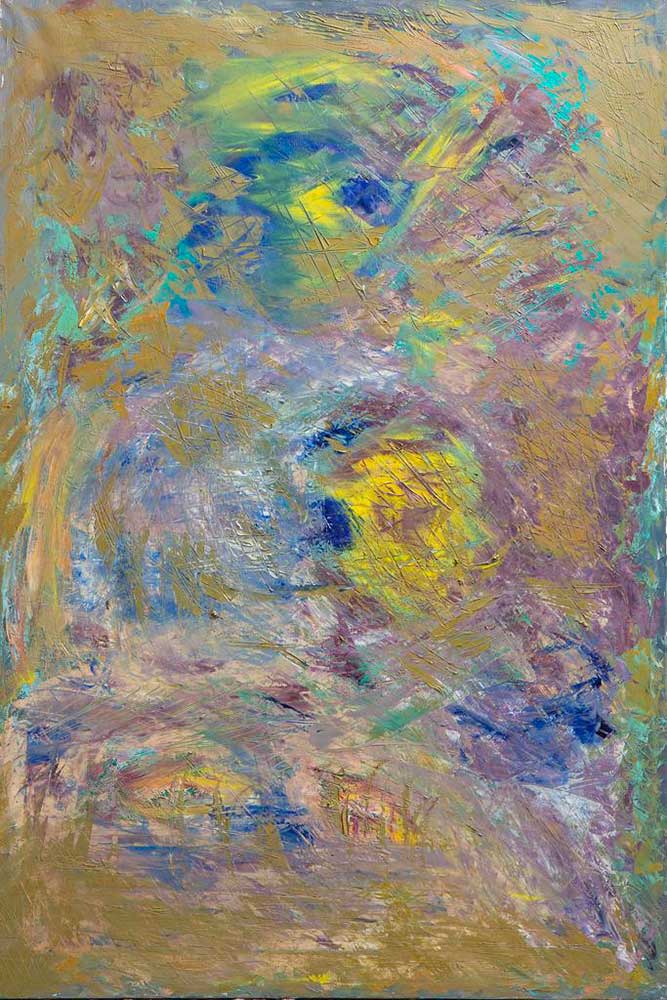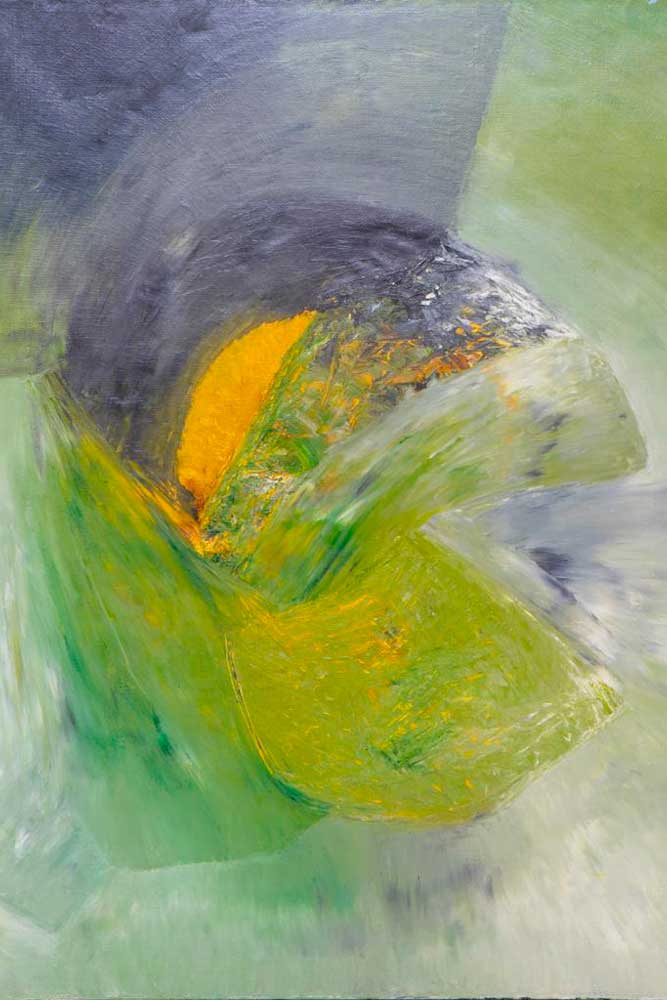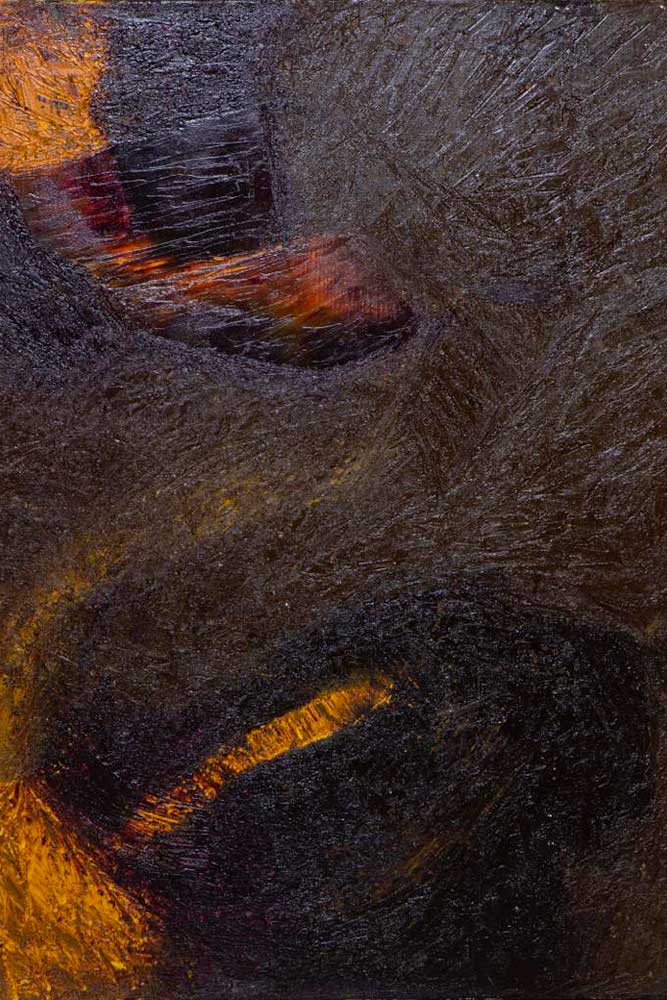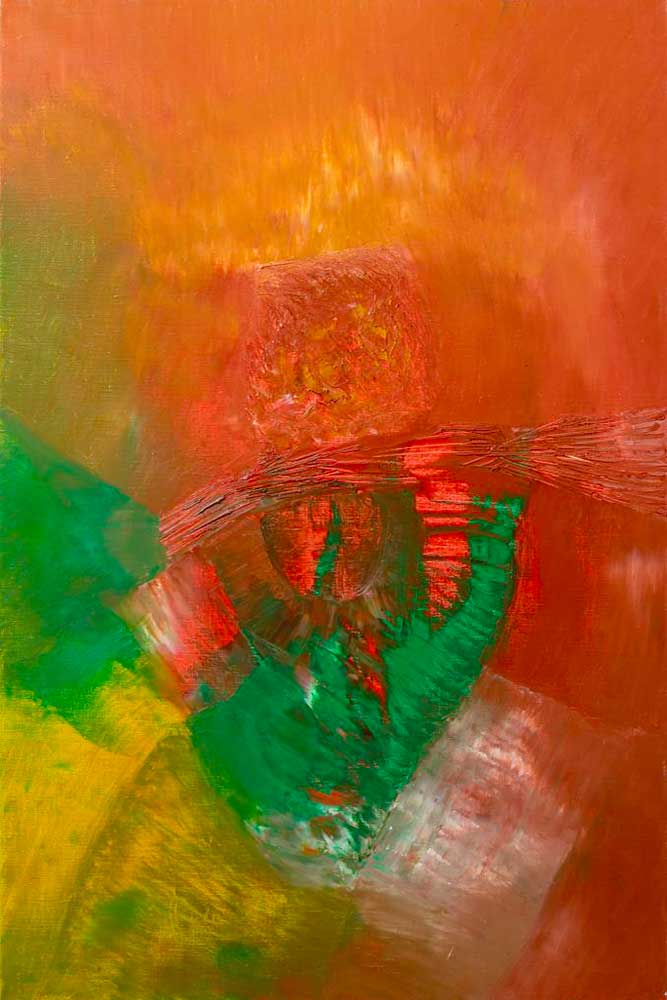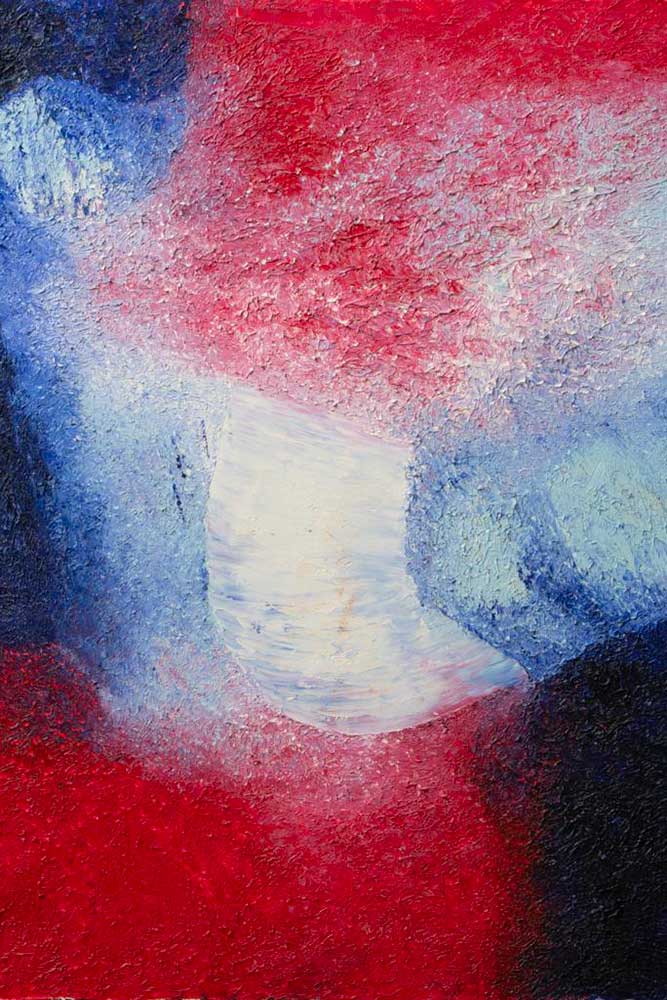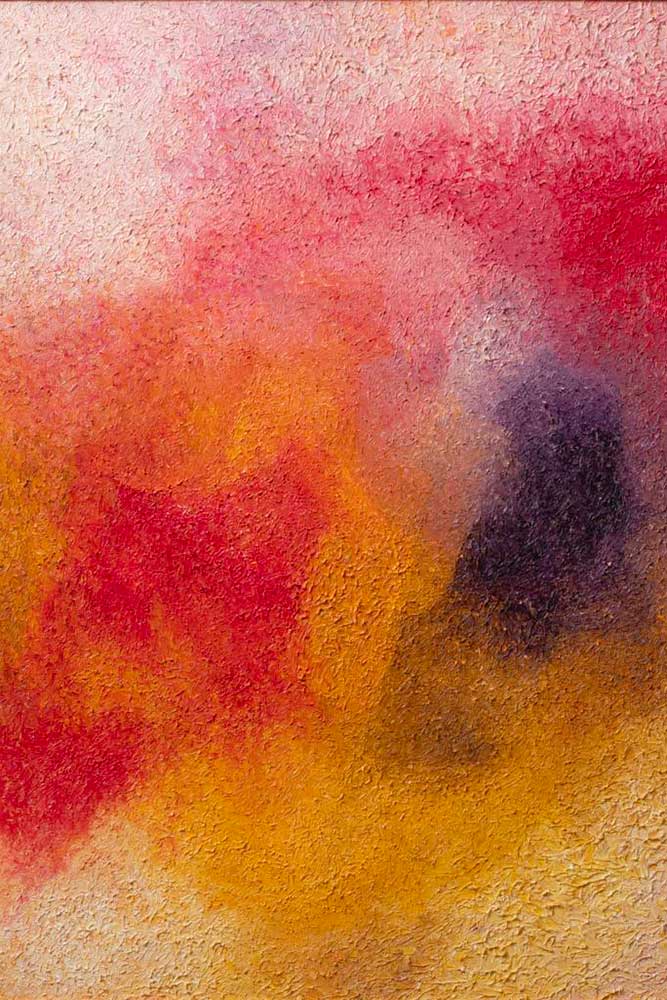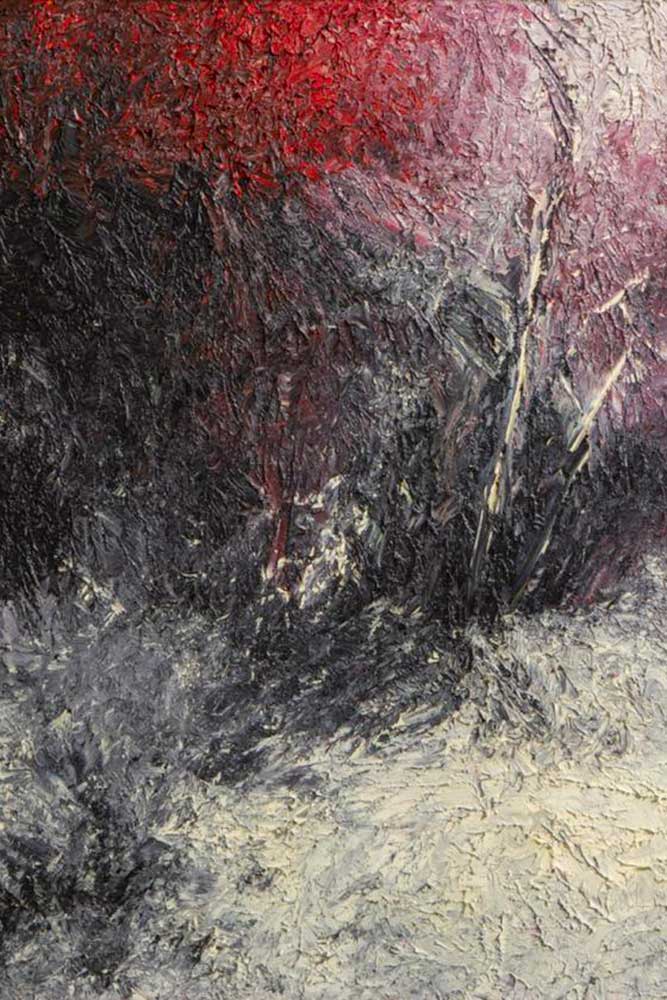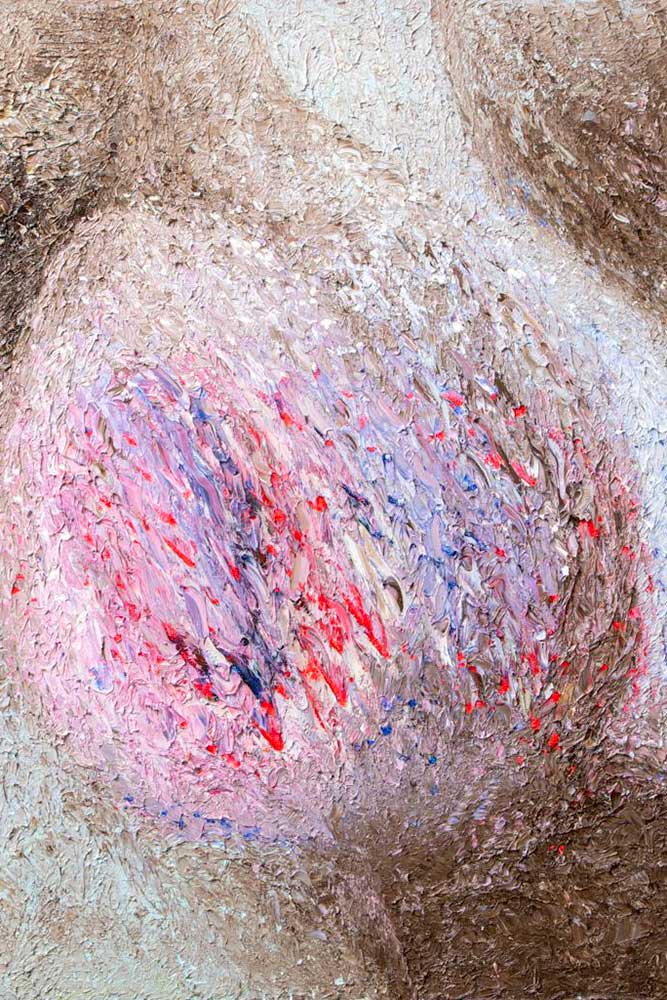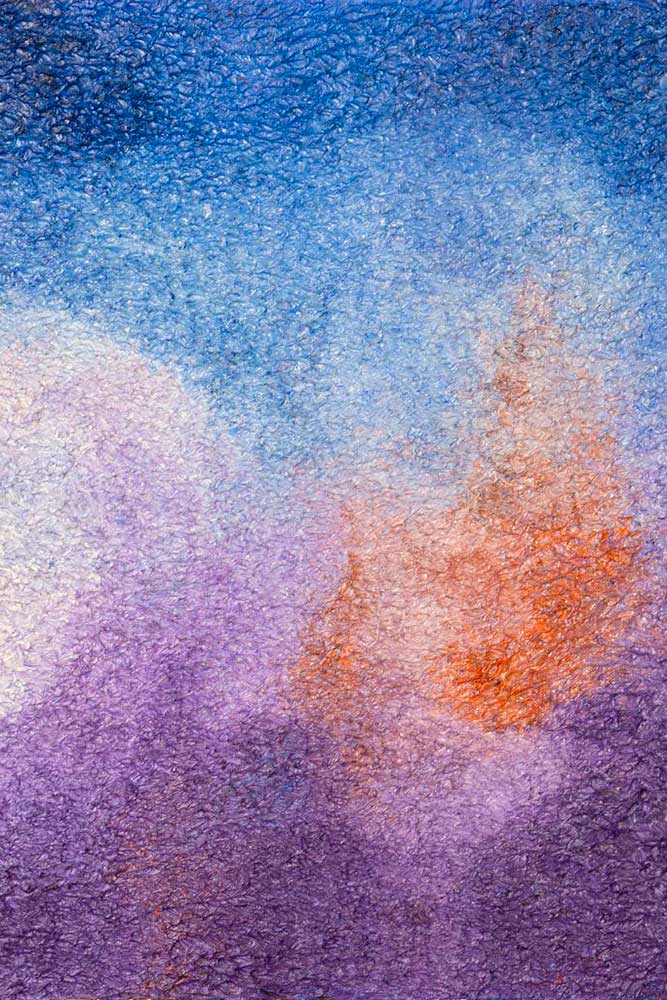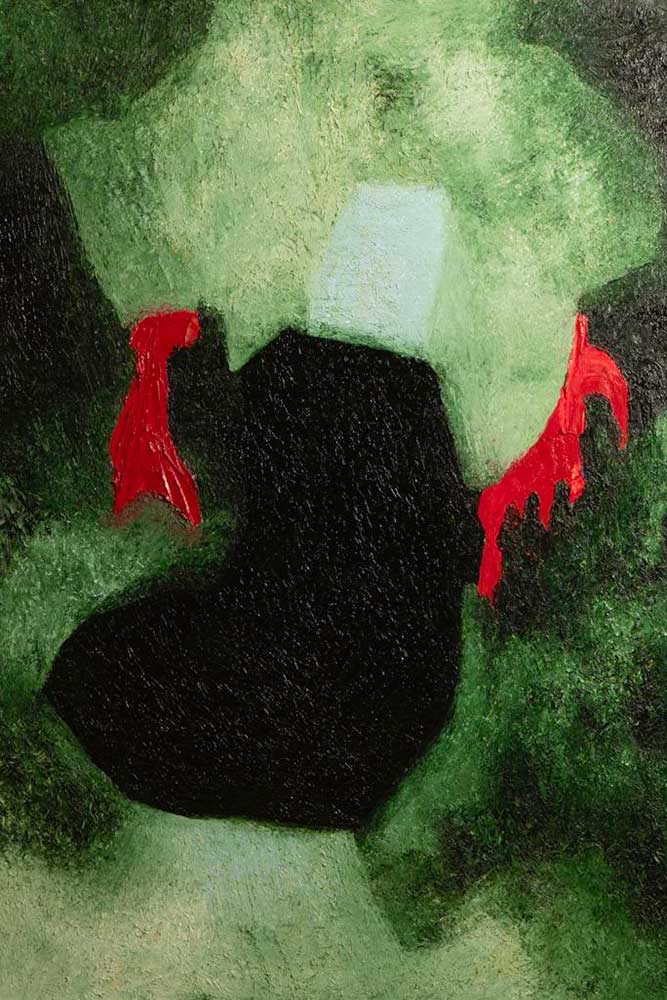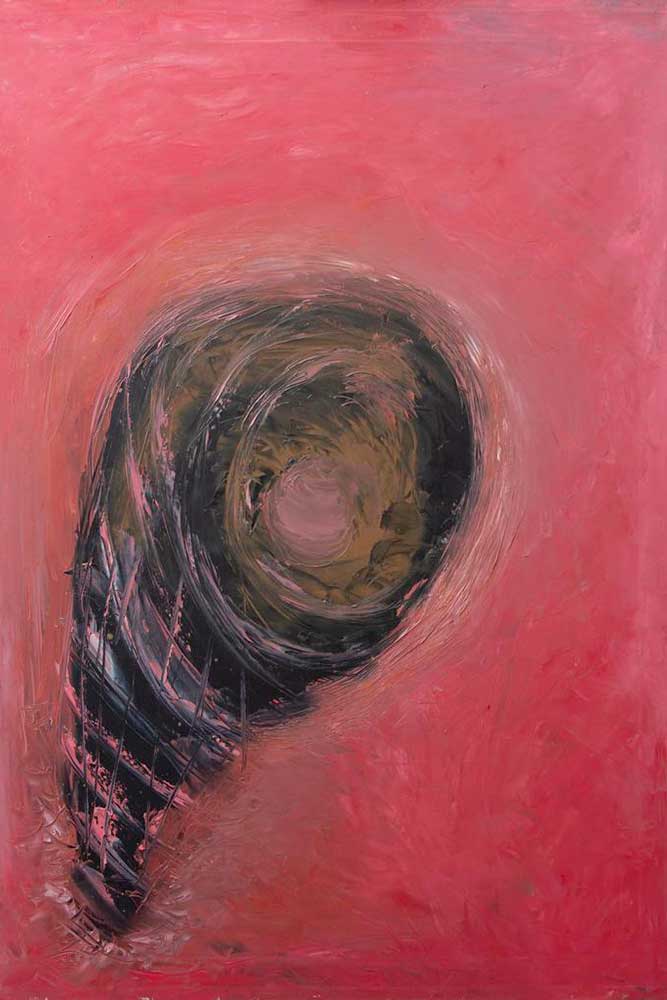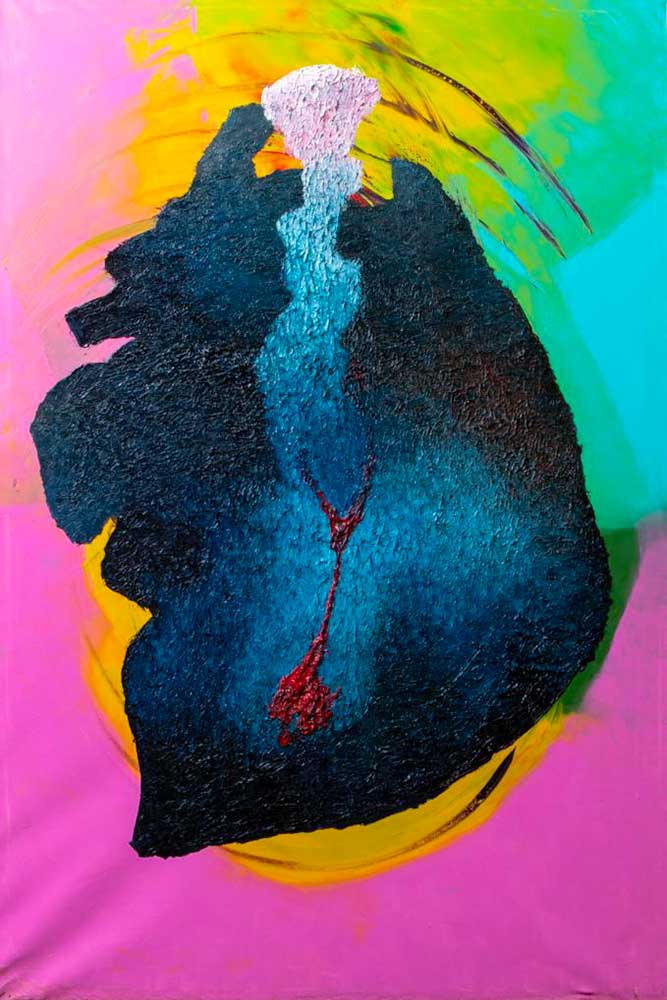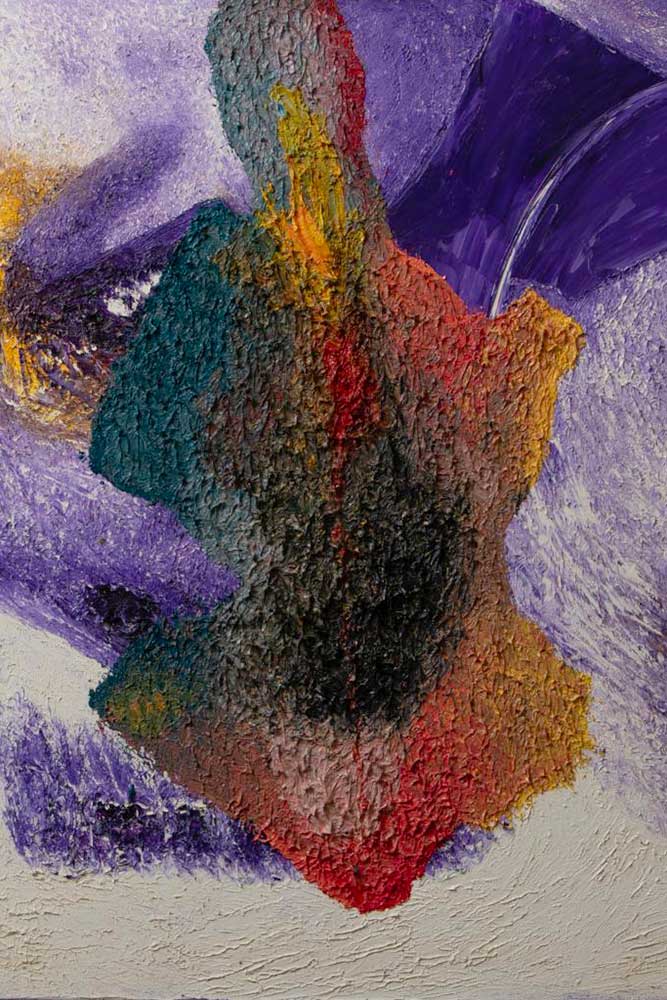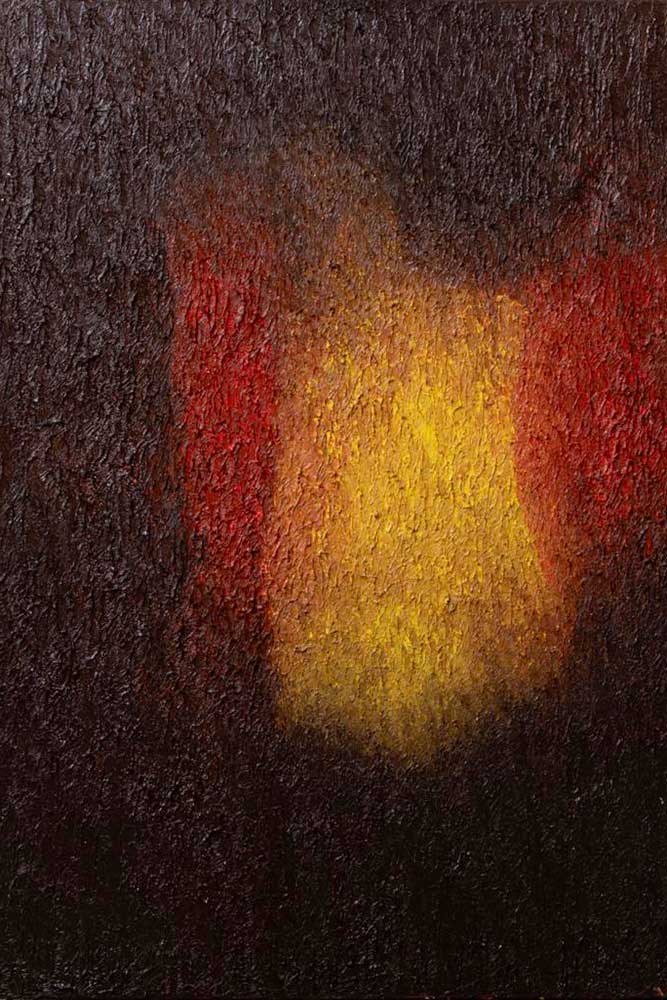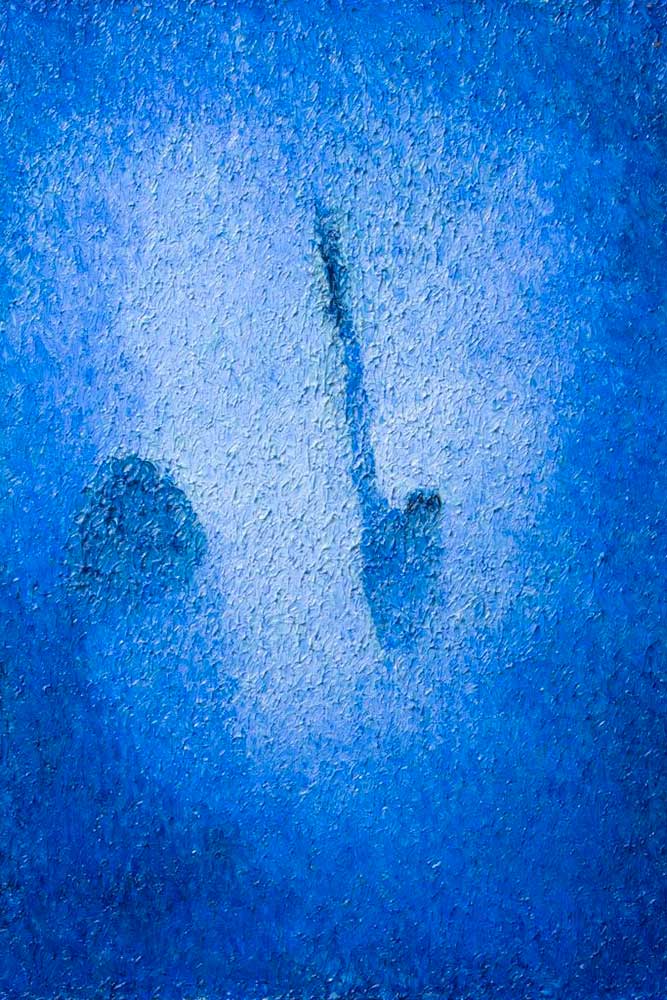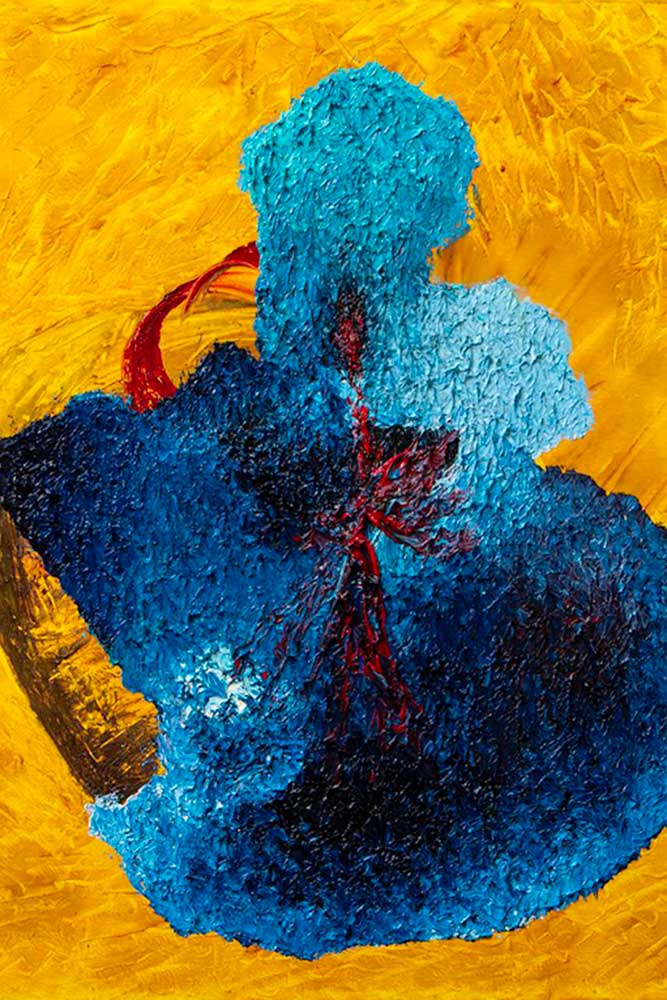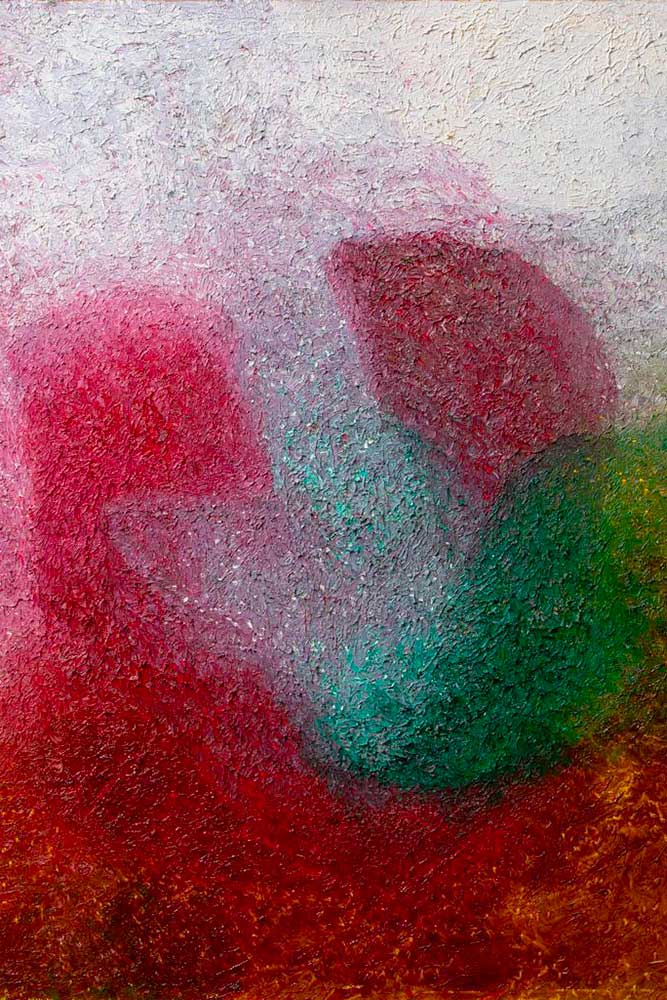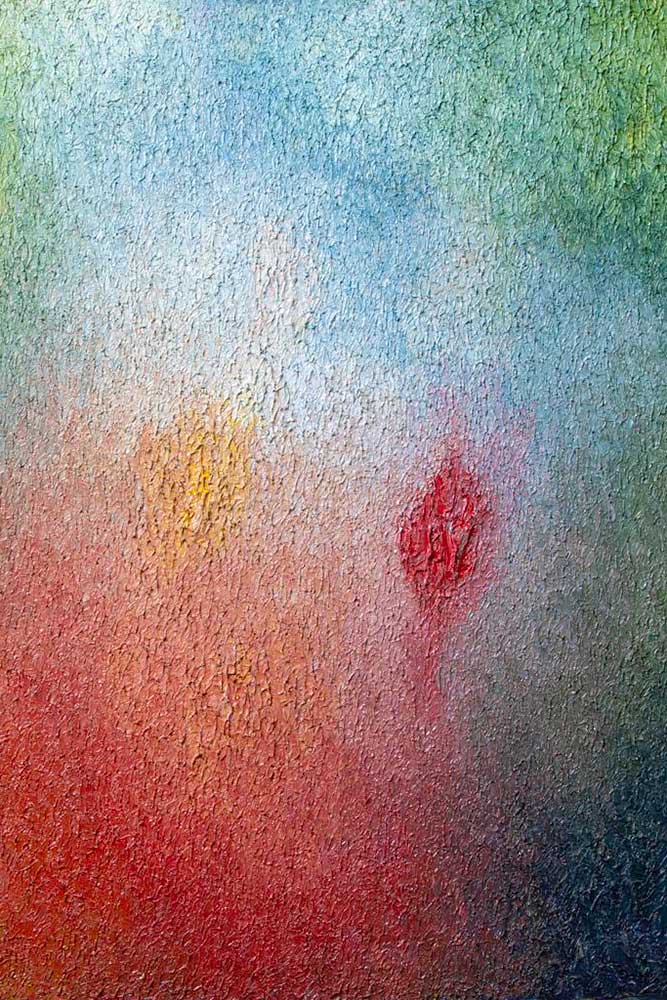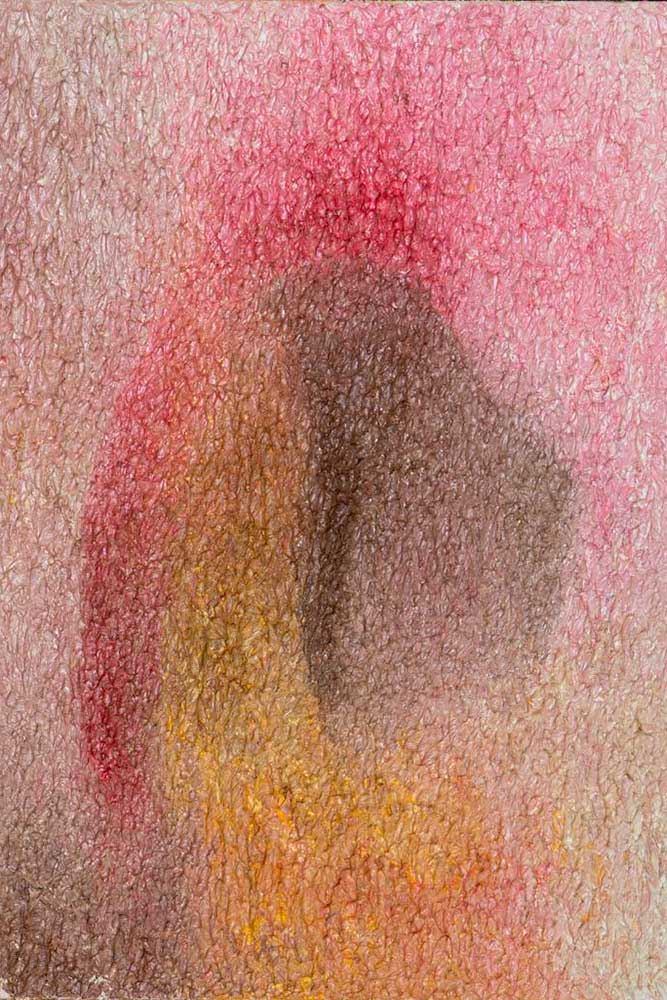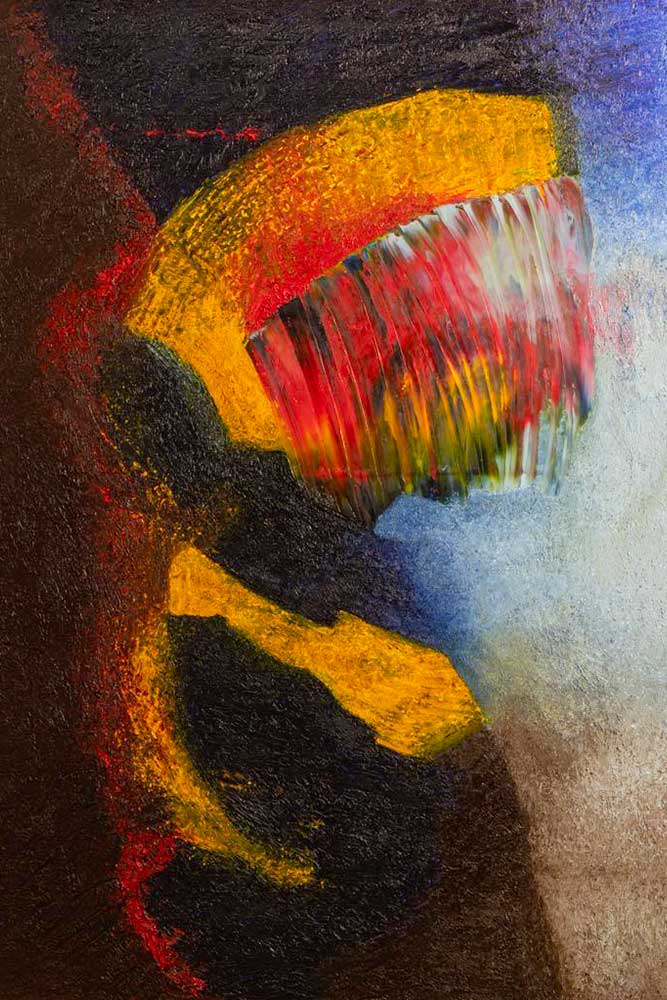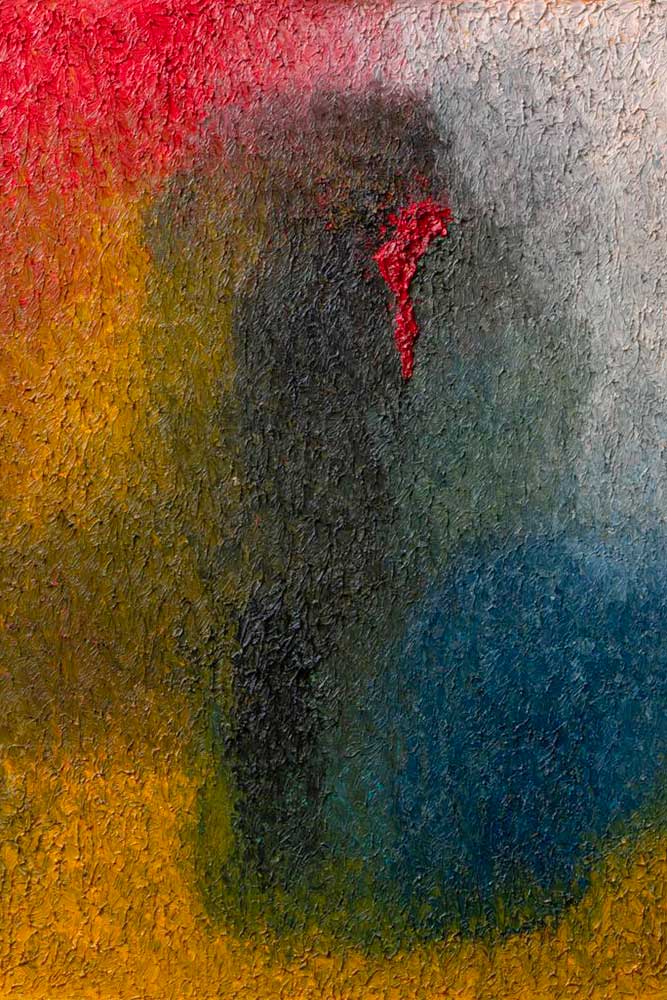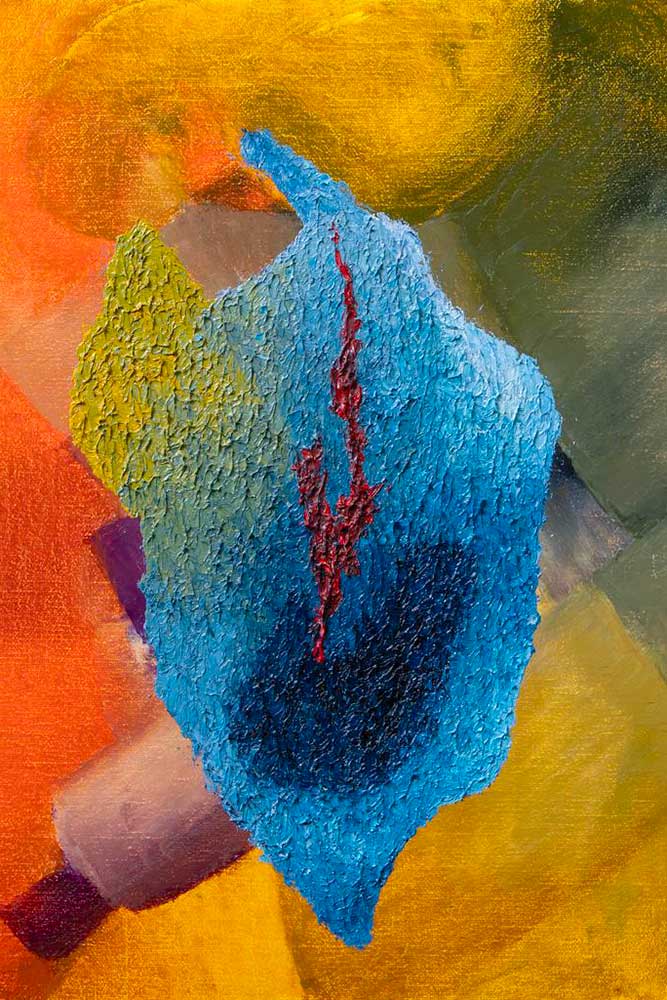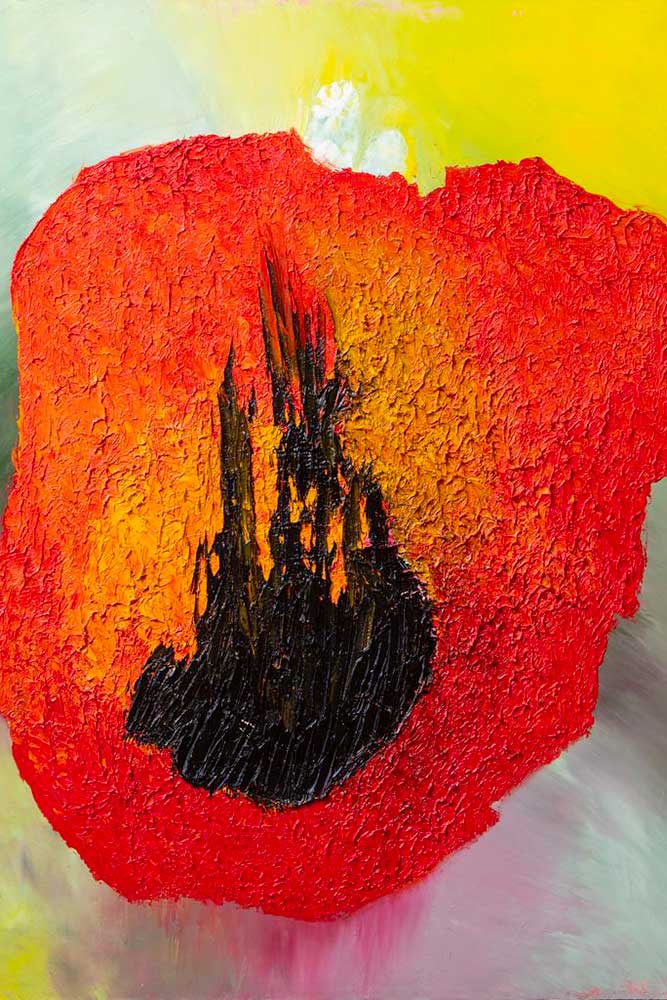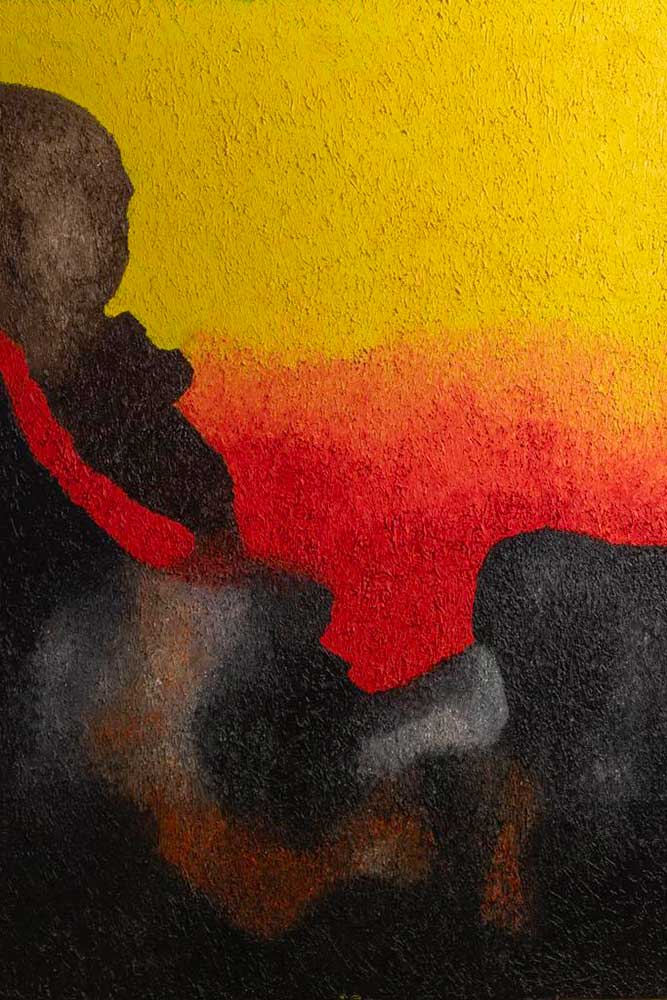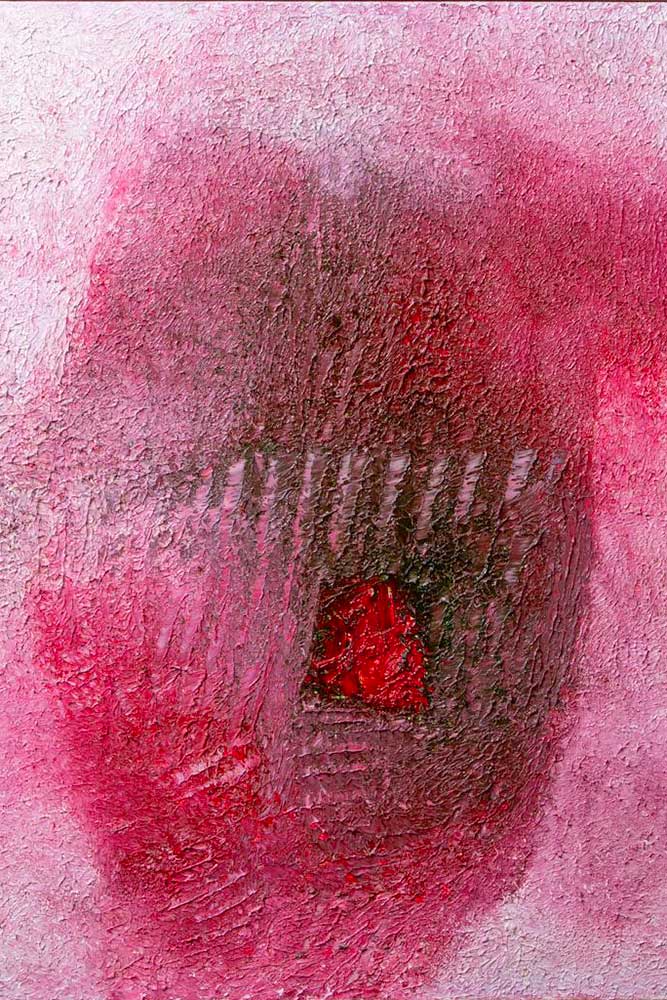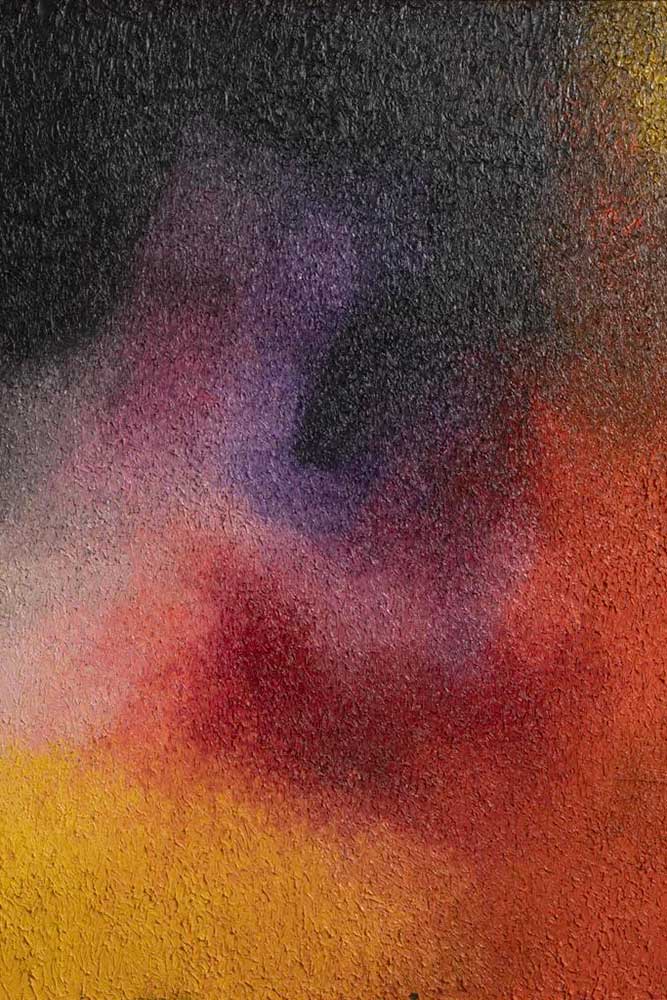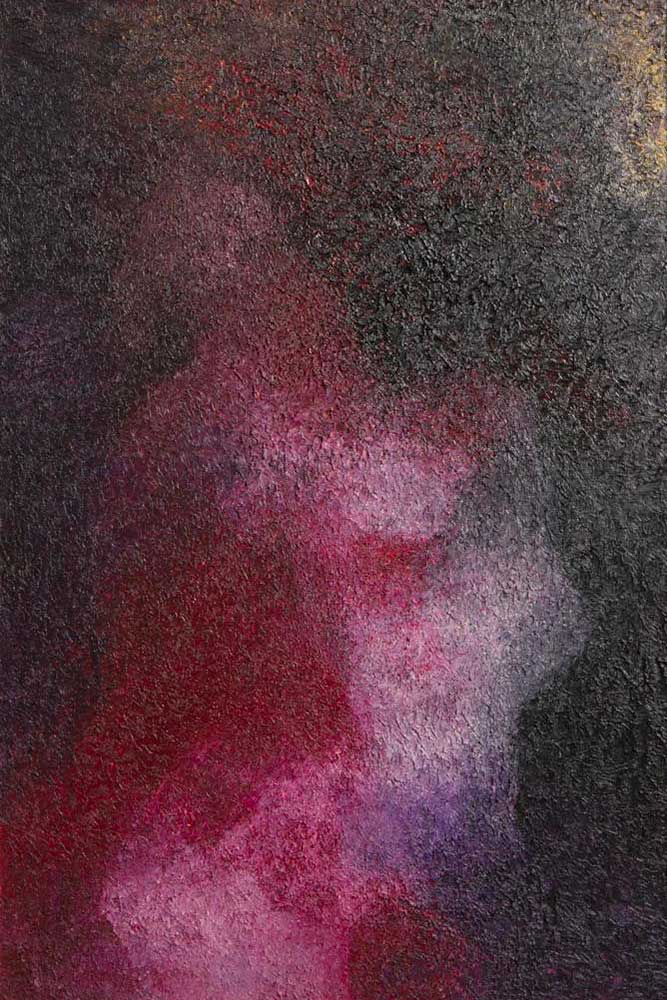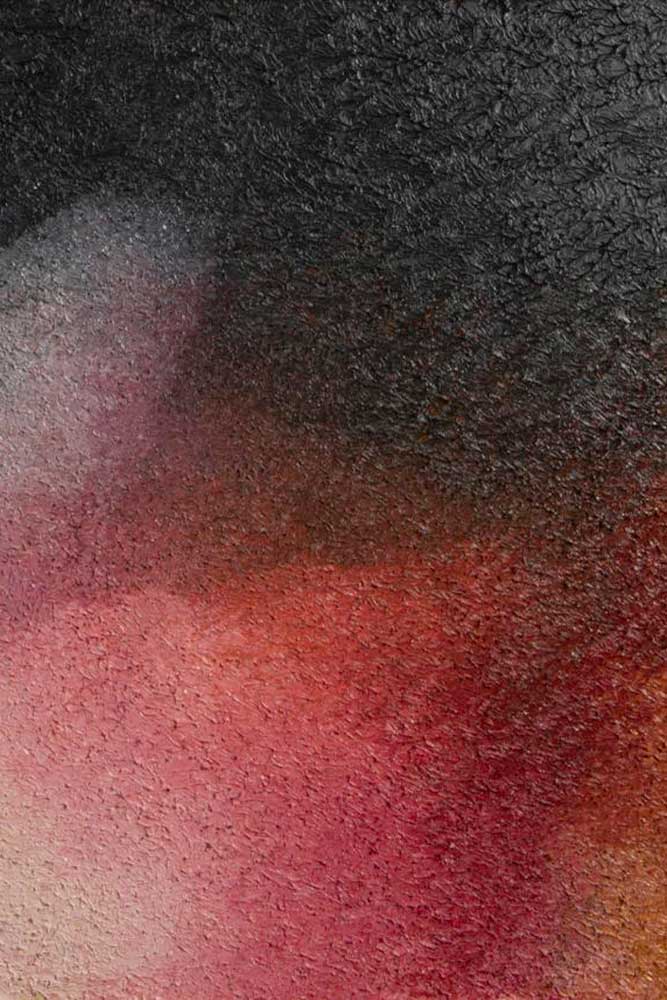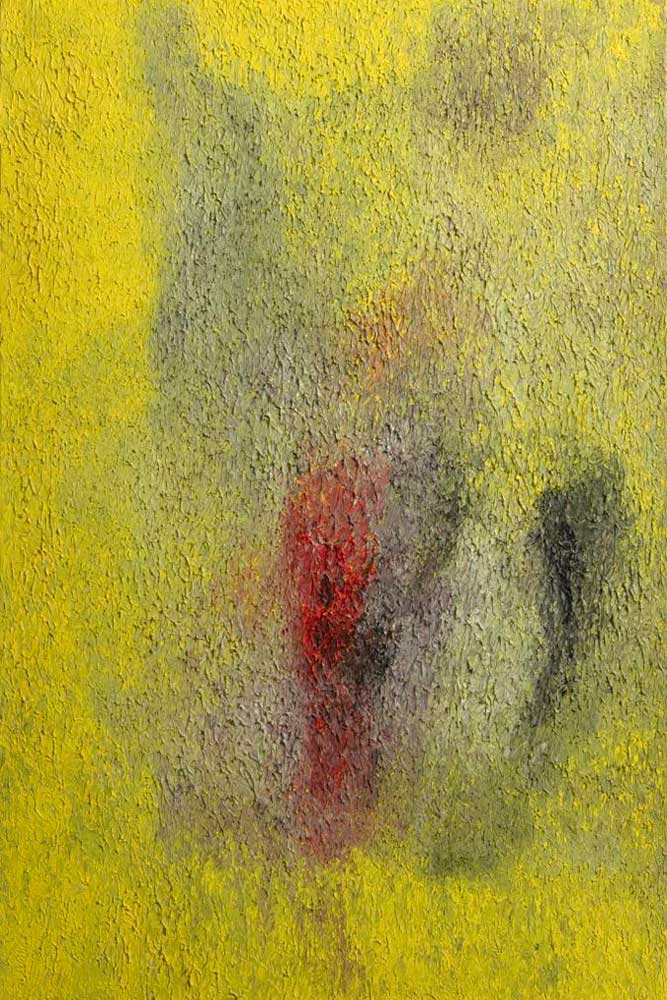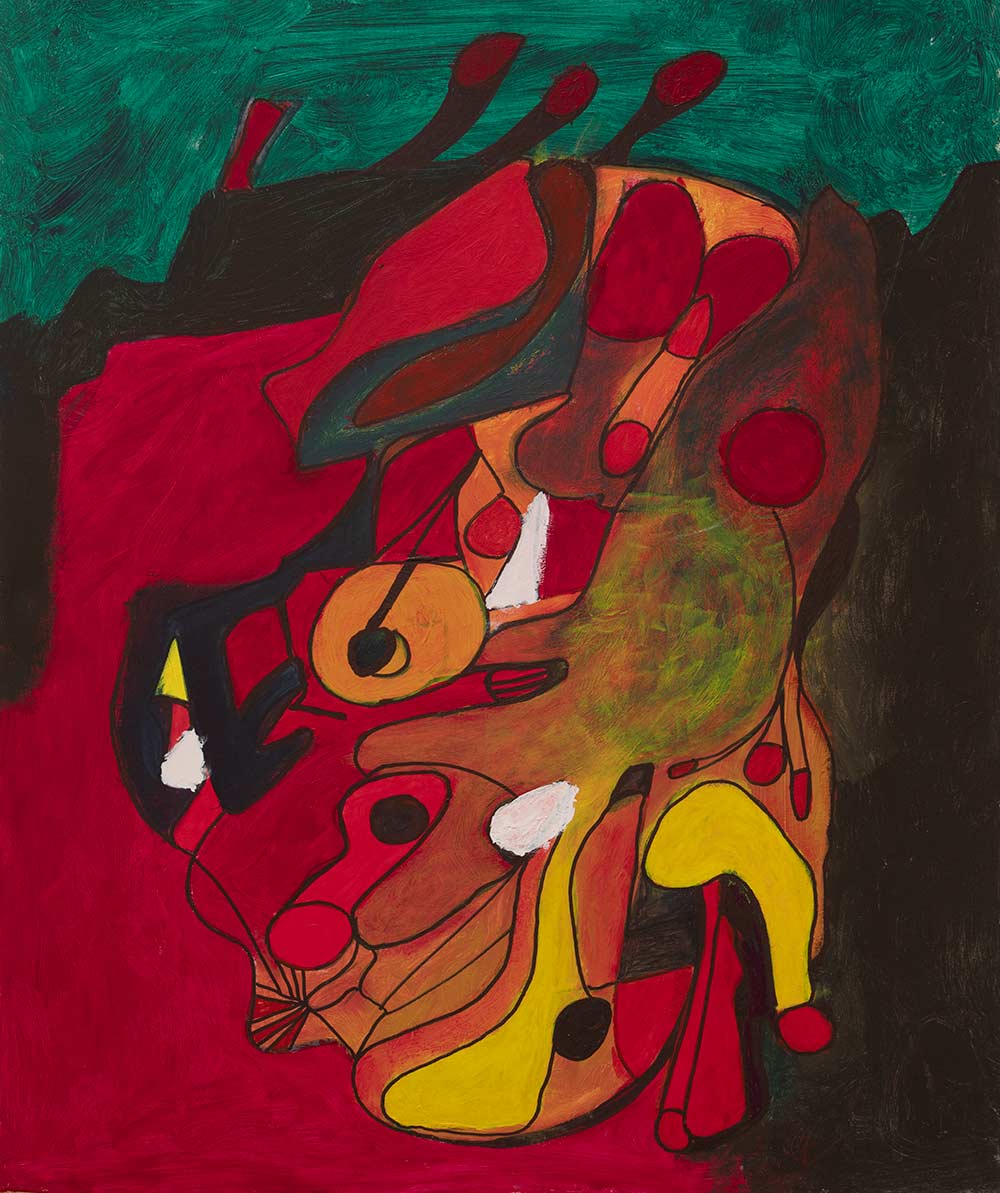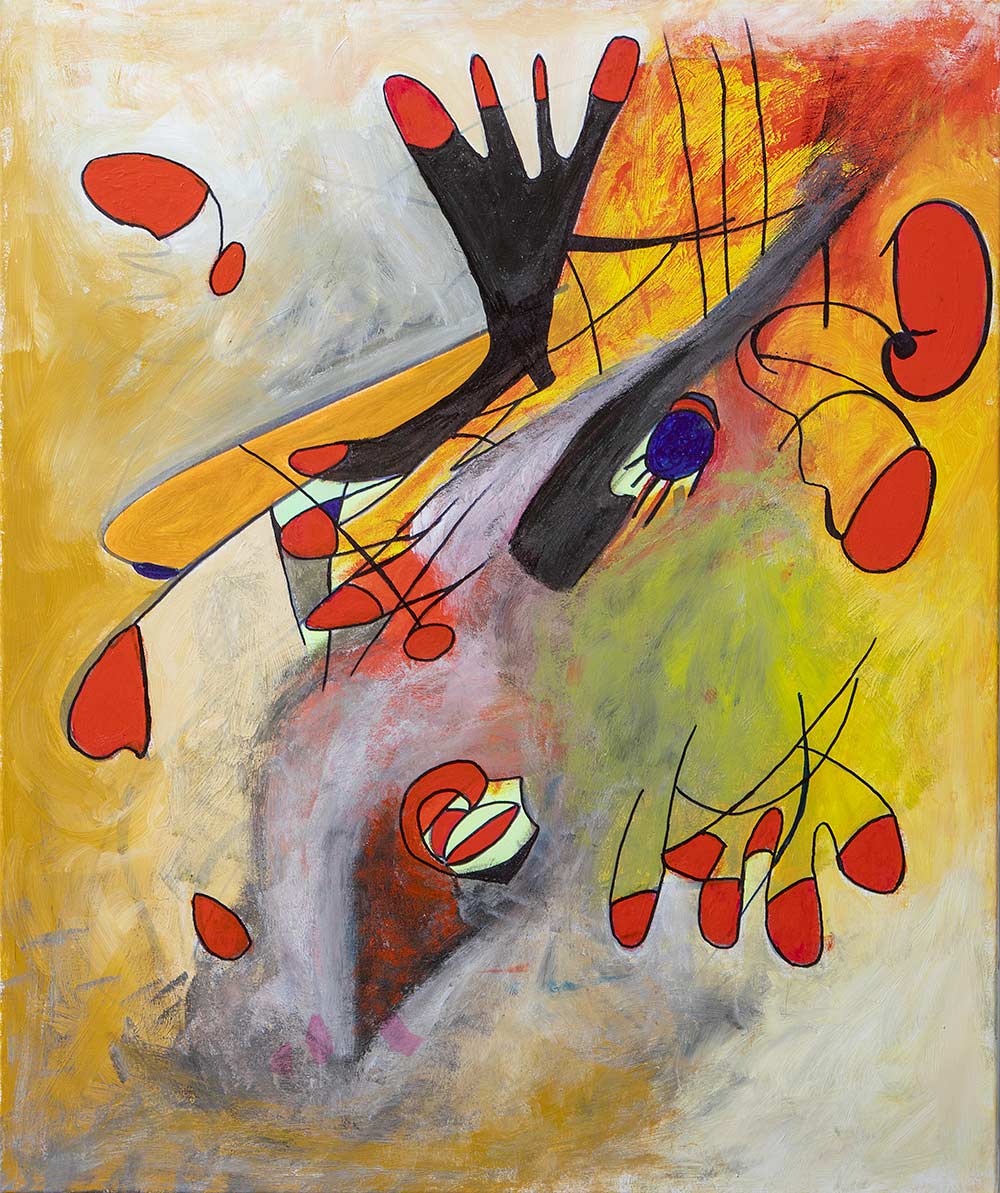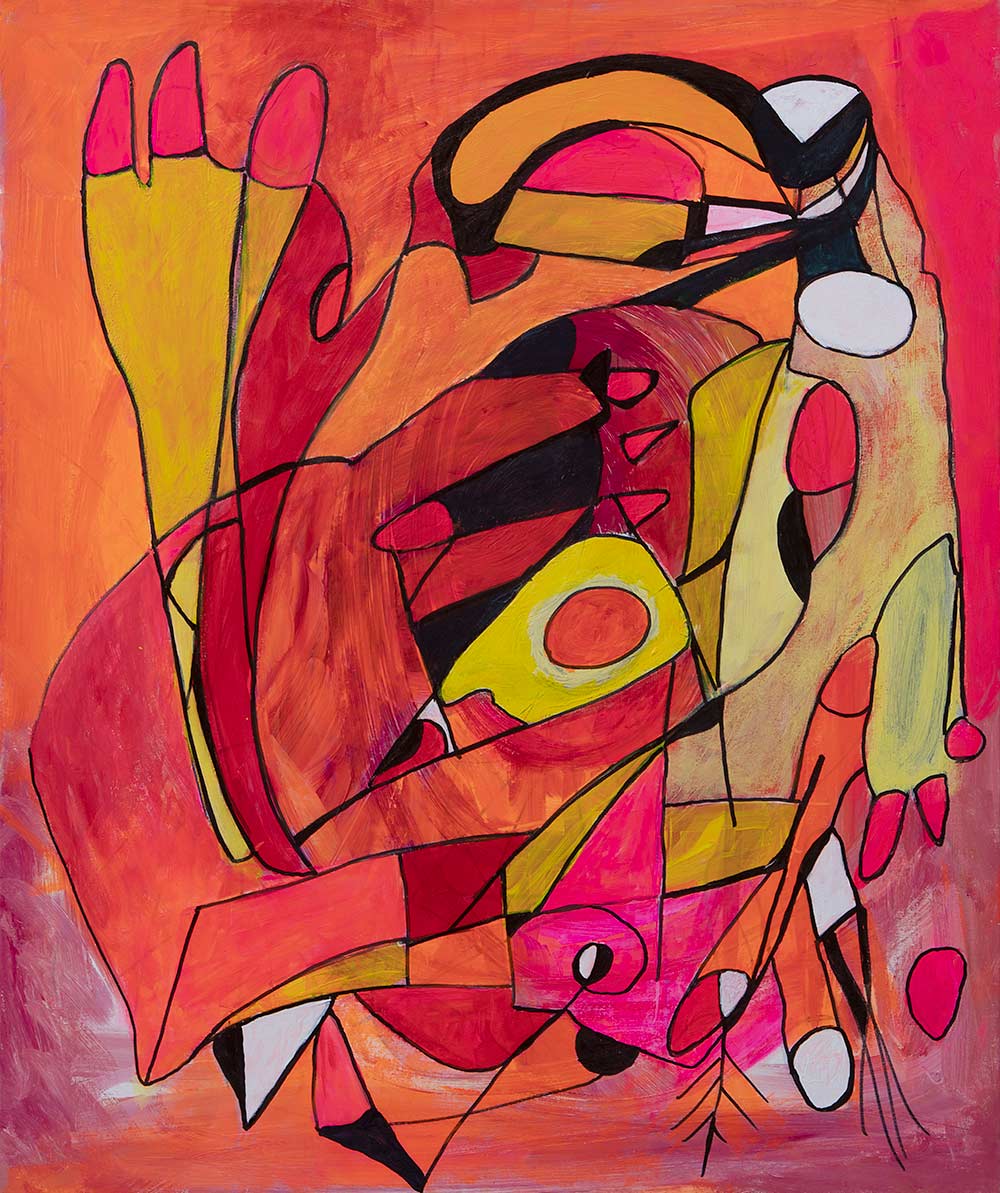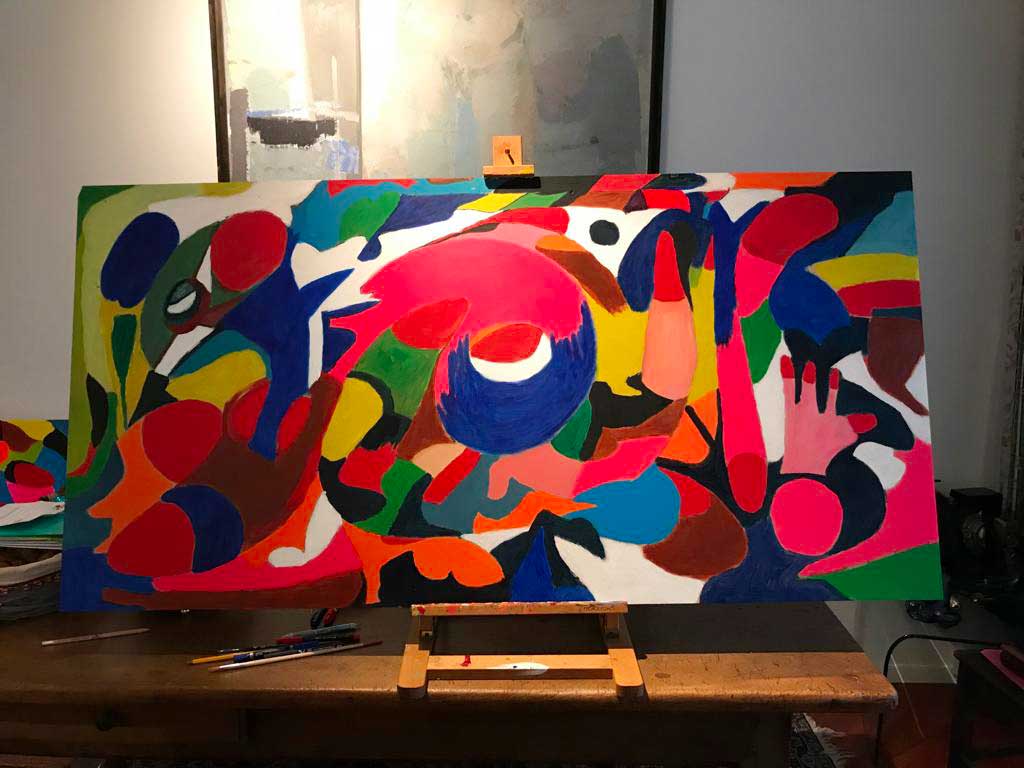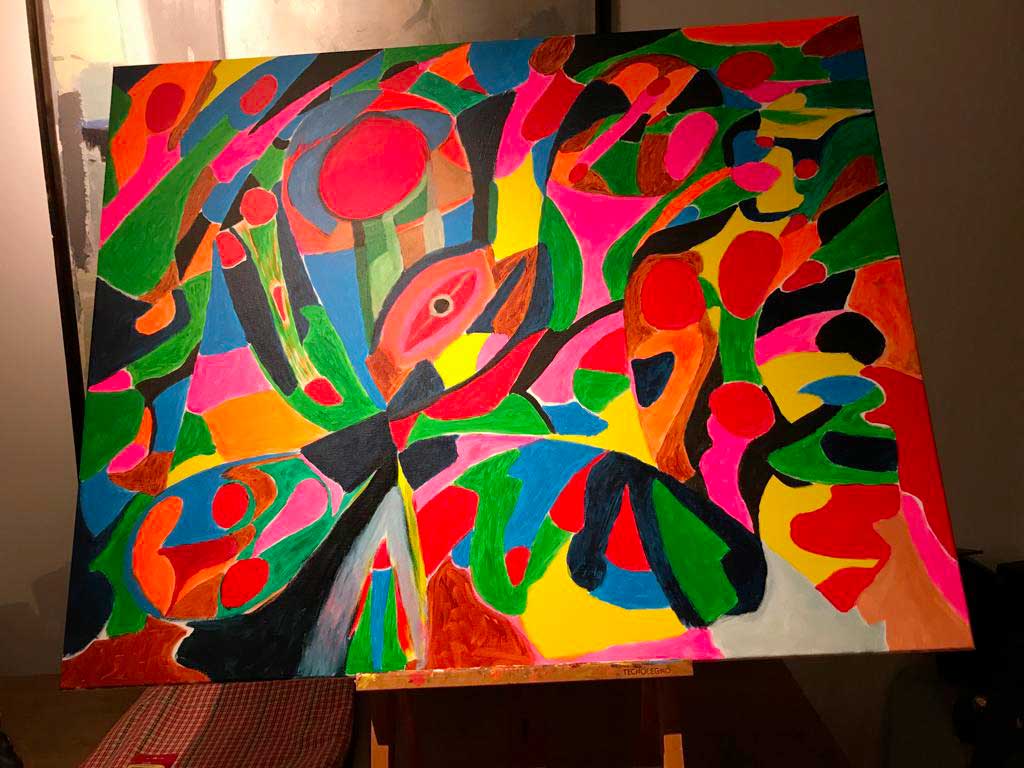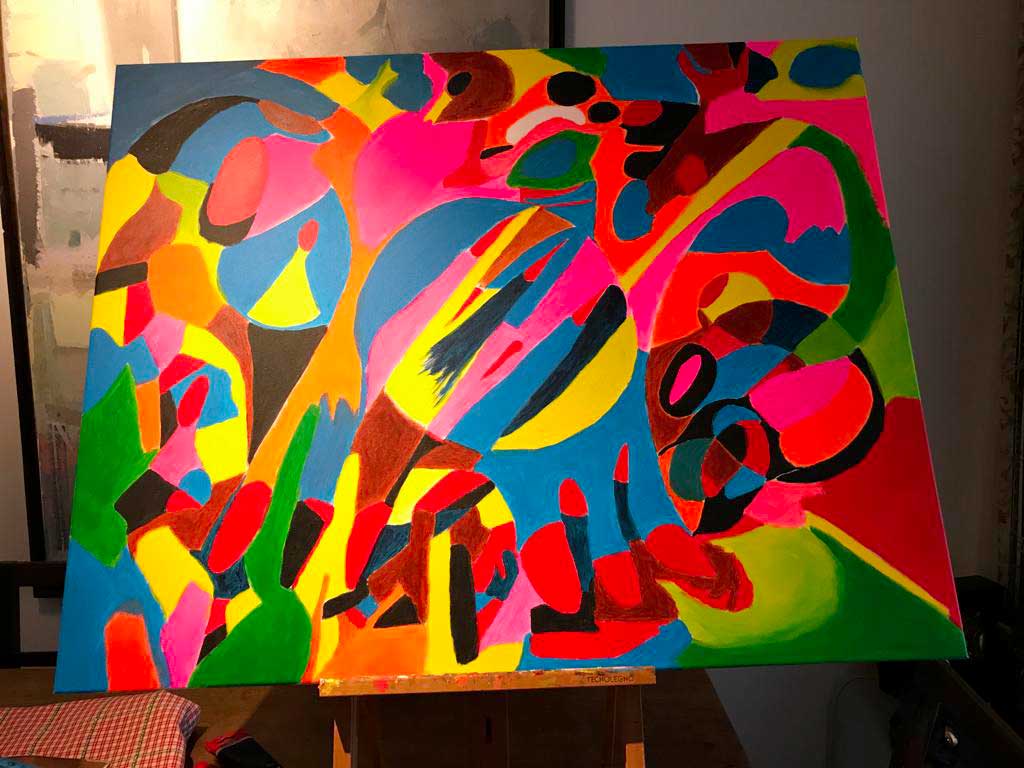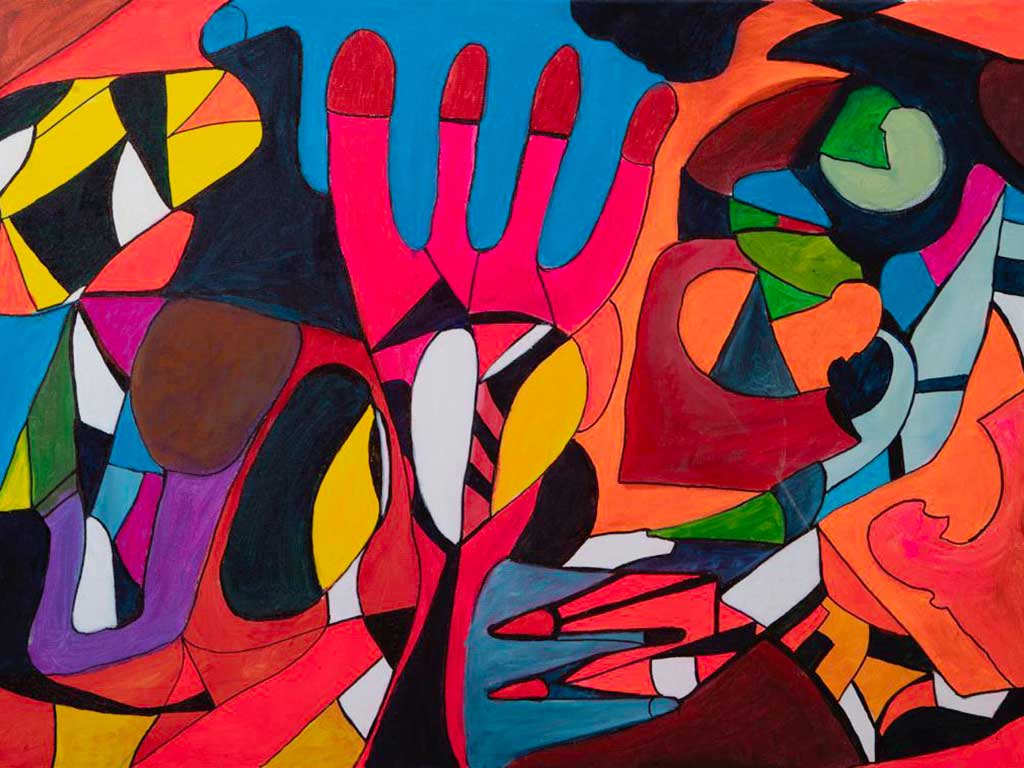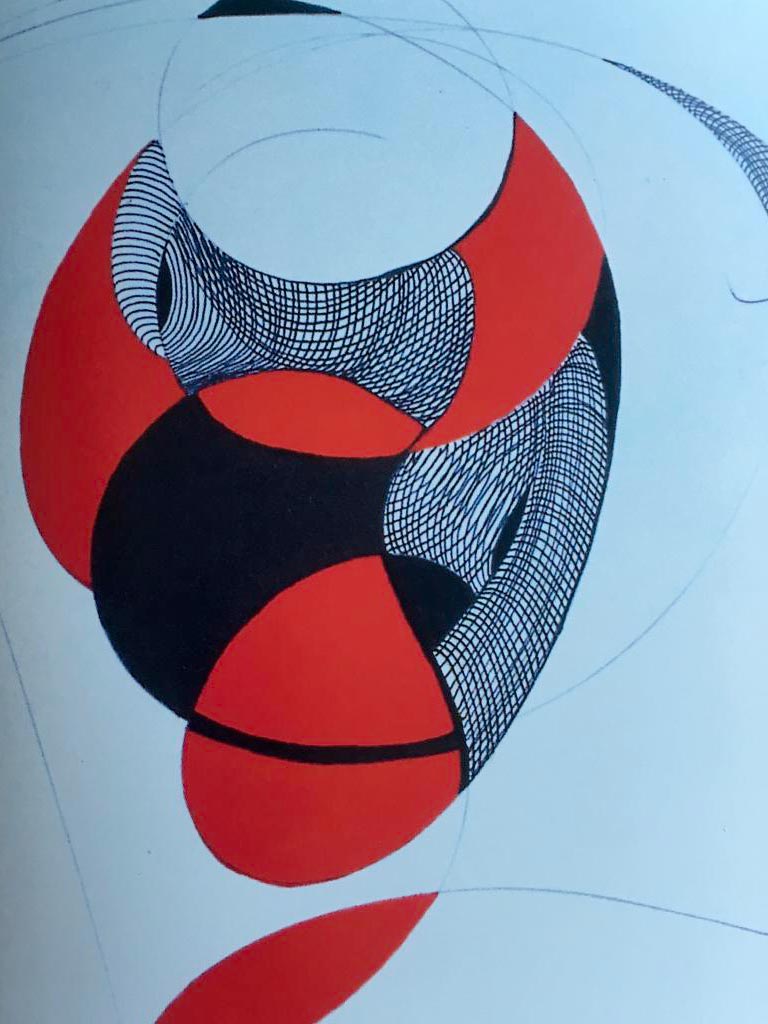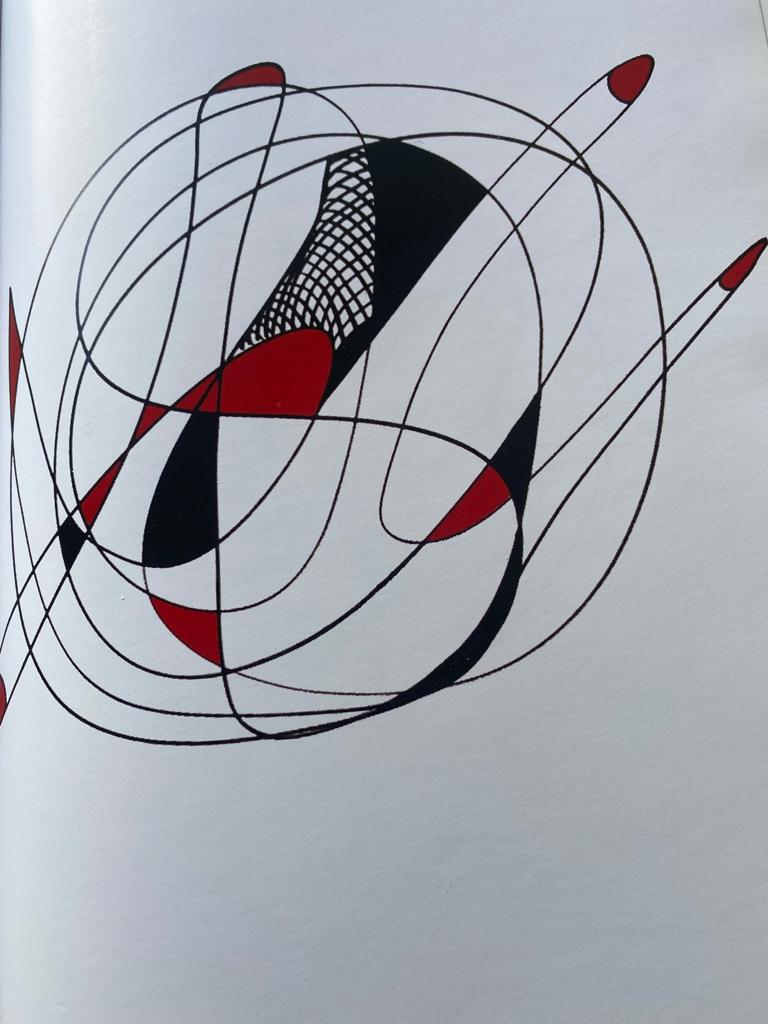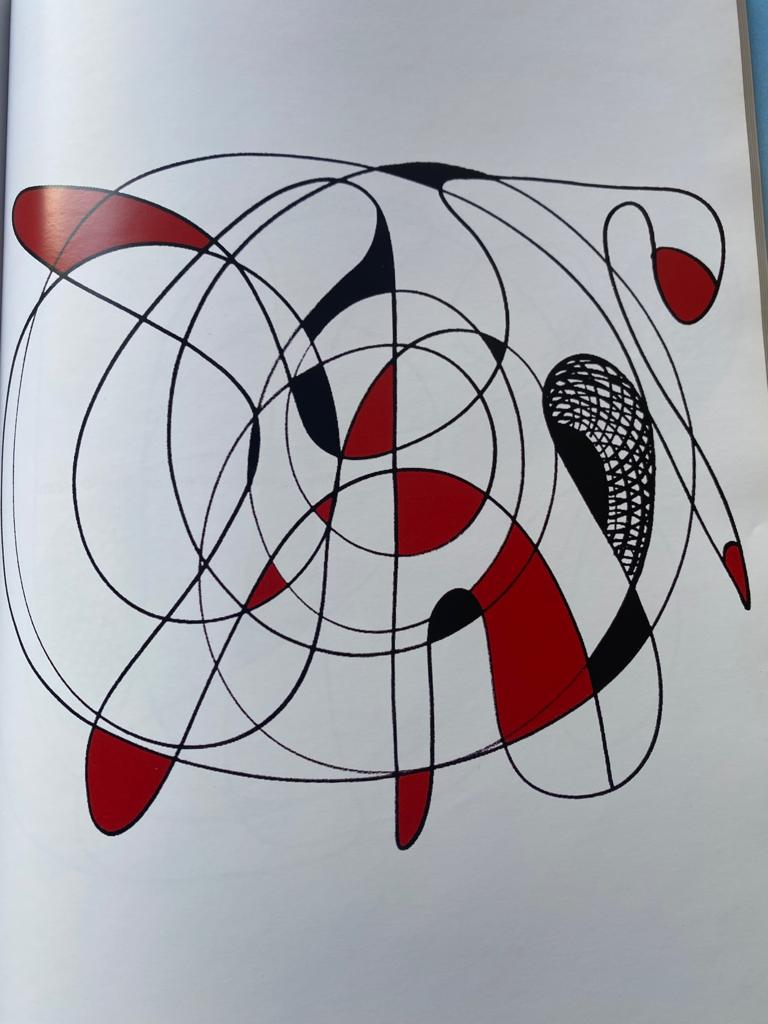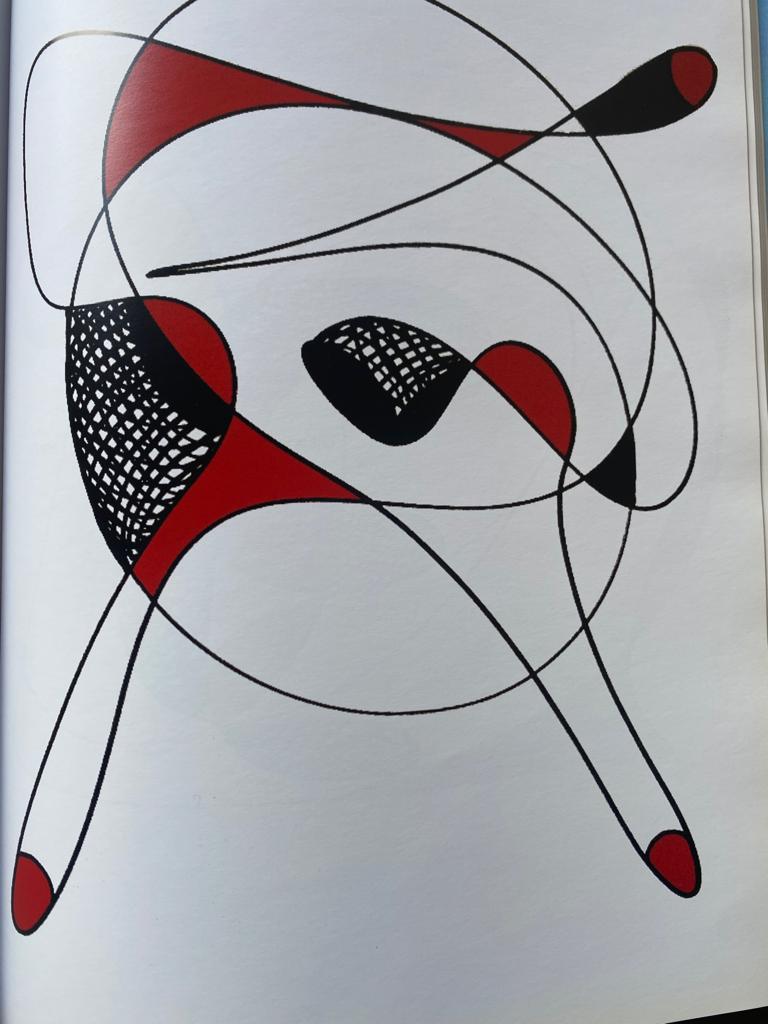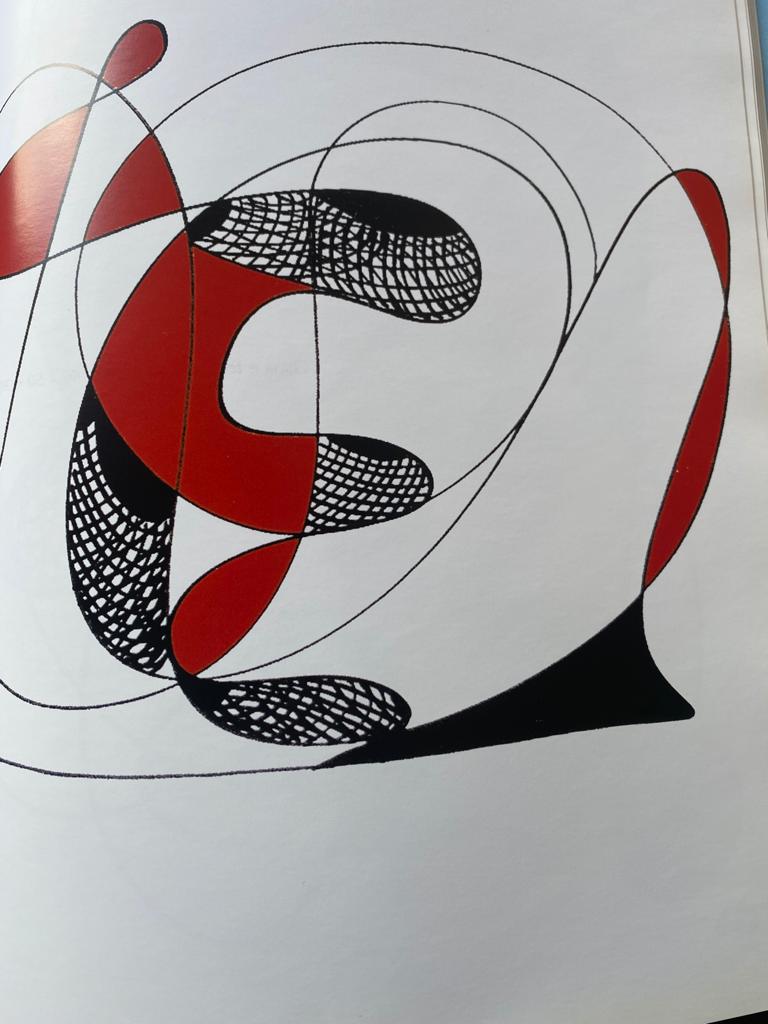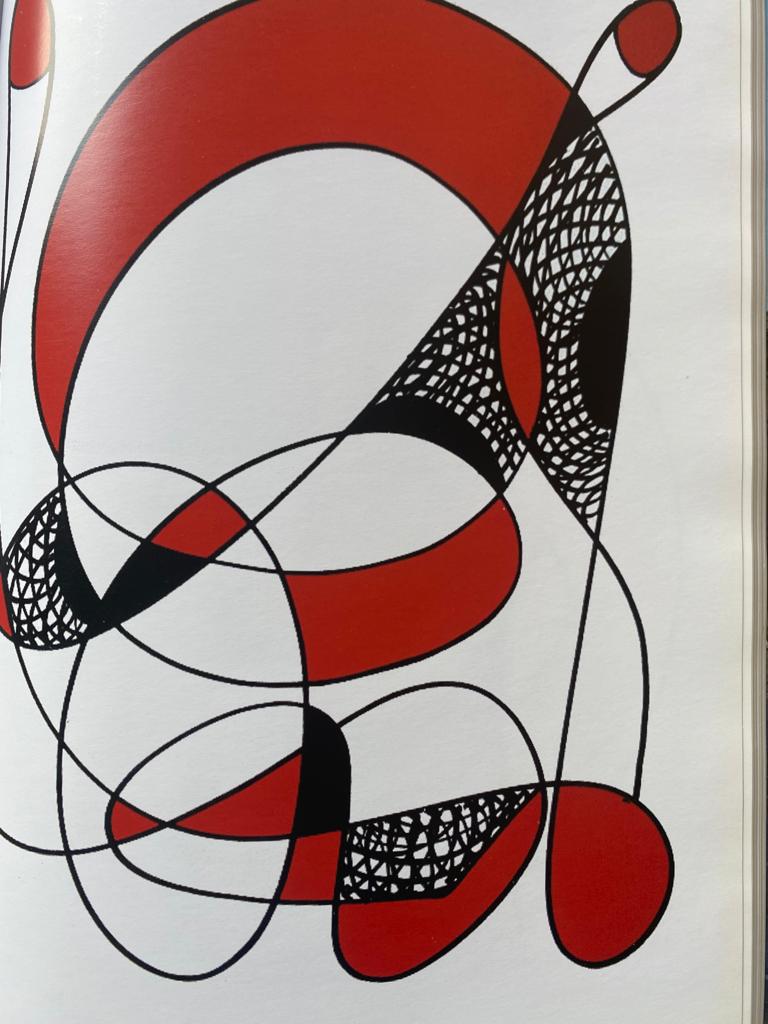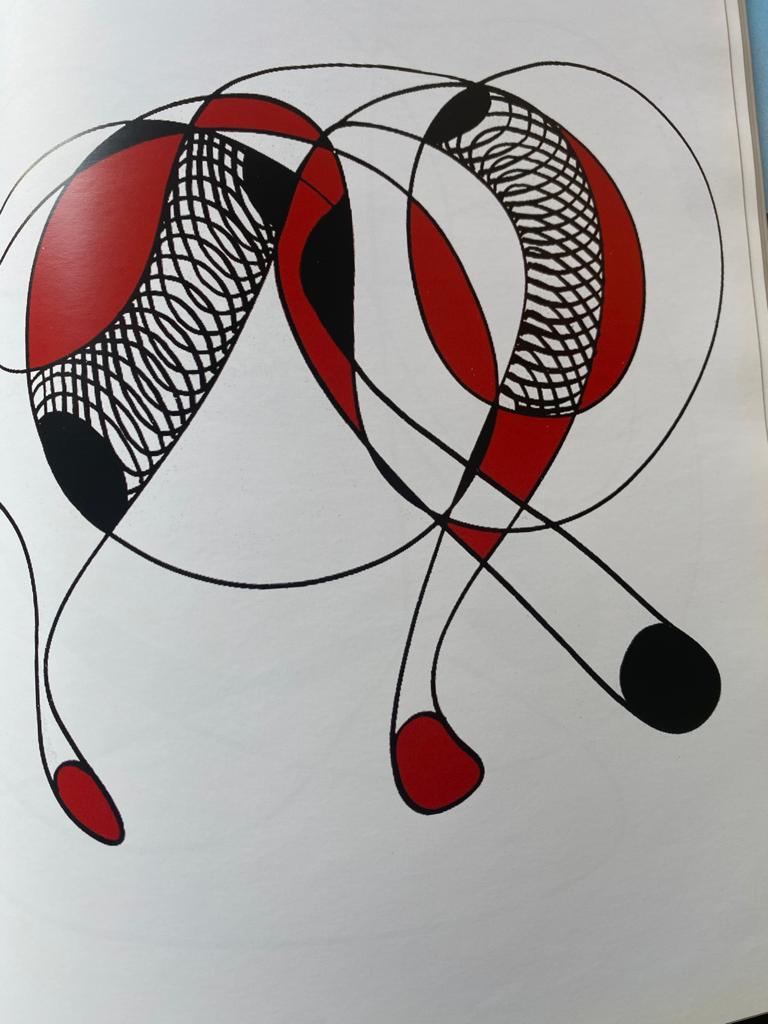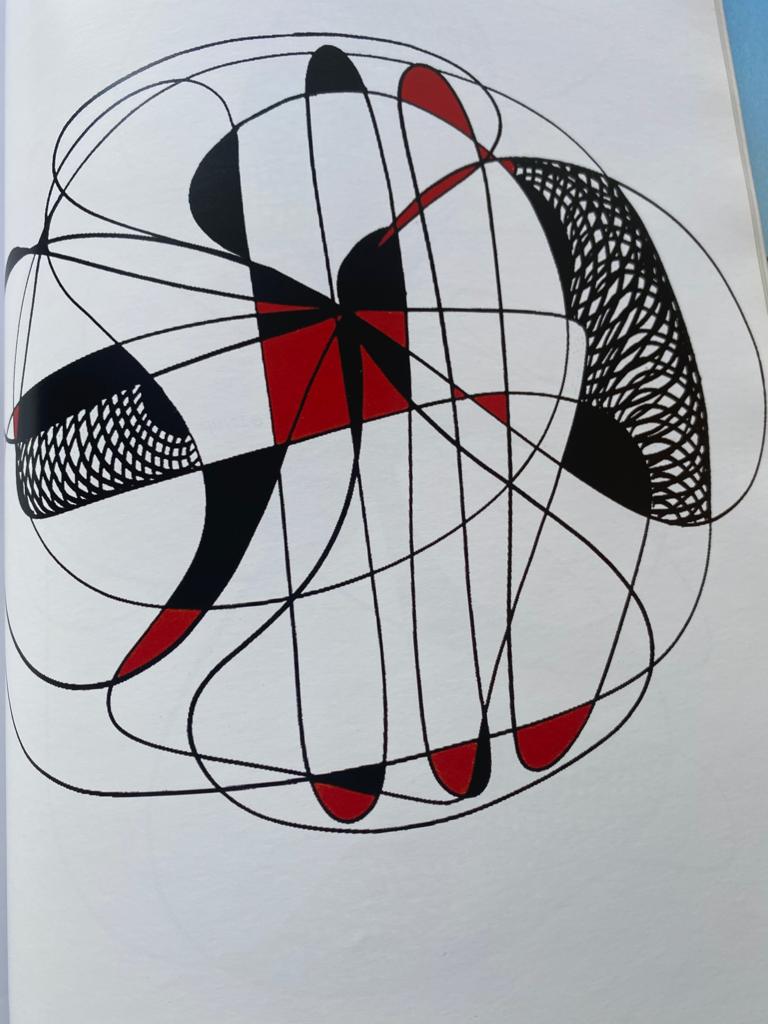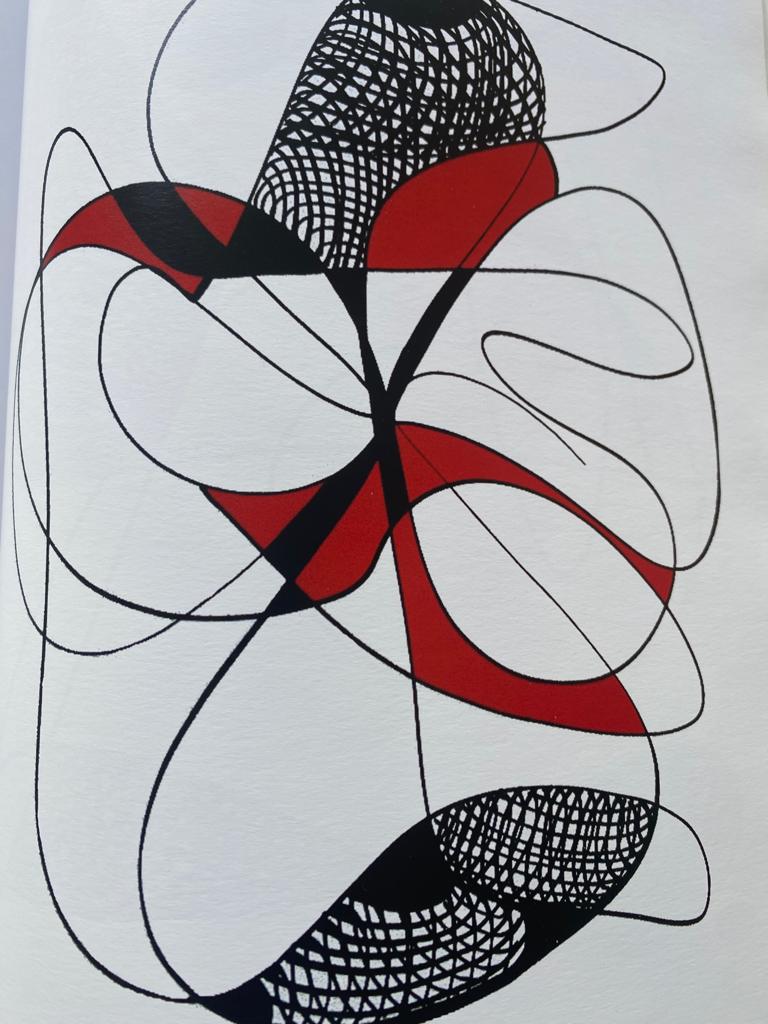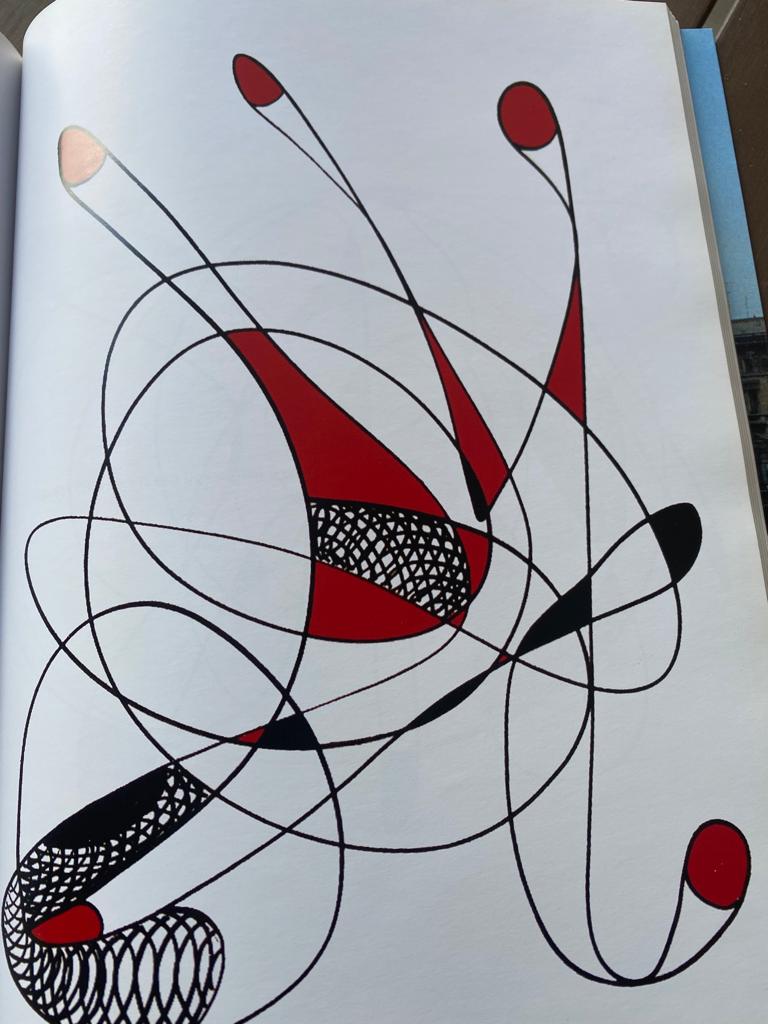The Painting
Franco Carloni wants to tell us how life must be always lived ff through its emotions.
Colors are sometimes bright and sometimes almost monochrome. It is life that passes. The non-color, black, is not a part of his palette, because it does not reflect light and for this reason, it cannot have a dialogue with the energy.
From the main colors, yellow, red and blue, always presenting in his works, he can interpret of what and how many, among the folds of painted matter, there are the possibilities that this composition is right to describe us the emotions, the adventures, the stories, the journeys, that the artist wants to transmit us.
The pictorial surfaces show an harmonic wrinkle through a thick scheme of ups and downs of matter, light is captured inside of the subsidence and has a dialogue with the color, and makes it vibrate in a nearly unreal symphony. According to the angle of the spectator – the observer in front of one of his paintings becomes protagonist – the work sometimes becomes mild and submissive, sometimes sharp and aggressive: it is the double face of life.
A research on this dualism may be considered to be one of the journeys the artist feels most fascinated.
Certainly, Franco Carloni’s research, which drove him along this path, I think with pride for him, can be arrived at a conclusion: his ability to transmit us his creed.
Let us see, understand and hear the energy.
[Excerpt from Daniele Crippa’s review, october 3, 2000]
When Carloni passes to the dimension of the pictorial surface the rejection of the line is transformed into an immediate gesture which does not permit rethinking. If anything he modifies the body of the colour by way of stratifications and thicknesses that allow new vibrations, sensual presences and tactile values of the pigment to emerge.
The image is ‘born’ in the act of fixing essential traces of matter on the surface, leaving it up to naturalness to construct the picto-rial invention, to suggest the resonance of the light that grows inside the space of the depiction.
Rather than representing the thought of a thing, or the memory of a known form, the painting indicates the waiting and expectation for a palpitating image which unexpectedly takes possession of the eye without go-betweens which are not within the energy of the colour, the sensation of transforming the outside into inside and vice versa.
Energy is a word that has always existed in Carloni’s pictorial vocabulary. It is the desire to look for light in the most profound point of shadow/shade, in depth digging into the becoming of the matter which reveals itself by way of contrasts and confronta-tions, although also by means of subtle spatial agreements that remain there suspended, undefinable.
Every work has a particular story of its own. They are created from the fusion of the colours, from the first layer to the last, like an increasingly more risky journey along the variations of the matteric sentiment which guides the painting beyond whatever stylistic security, almost projected beyond itself, totally expan-ded.
[Excerpt from Claudio Cerritelli]’s review]
Oil Painting
The work of Franco Carloni has in recent years passed with impe-tuosity through stages difficult of attainment — without the filter of “background” which that multitude of experiences that the life of the artist, so profoundly filtered, has brought it in endowment.
A stormy sea has been weathered, he has known how to draw the breeze from the dead calm that will bring him safely to port.
Through storms he has drawn from the rain the lymph necessary to life. His dialogue with everything that surrounds him has become dee-per and more succinct.
In the last ten years — the period of the works presented in his double personal exhibition — the artist has drawn a summary of his Italian period, as if all his previous work were being “bathed in the Arno”.
His paintings today are surfaces that are more and more forceful in their harmony of colour that speak with yet greater sureness to the interlocutor. Pictorial surfaces rich and teeming: tales from life, summaries of experiences lived through.
In his research into volume the artist has reached a master of his subject so sure that his story, told through a surface now of mar-ble now of bronze, enraptures in absolute fashion.
His voyage of research into the interior of the sentiments has given birth to works of a profound harmony of composition and of rare technical execution.
His creed has been expressed in these latest works with ever more convinced descriptive skill. The occasion of this event involves two important institutions of two nations in which the artist often lives and where he has in programme a number of personal exhibitions in public locations in which the works of this period will be grouped together. We are grateful to be able to have in preview the pleasure of admiring a selection by the artist of his works of the last decade.
[Excerpt from Daniele Crippa’s review, Portofino, July 2000]
Three-dimensional Painting
Acrylic Painting
Chinese Ink
In the work of contemporary artists, a significant role is played by Chinese ink drawings, on which the author keeps adding linear circumvolutions without ever lifting their hand from the paper. Subsequently, some parts are outlined using red lines and grids, which convey the idea of space enclosures, energy bursts or even cosmological models. Using the surrealist and psychic automatism techniques, Carloni uses a practically unlimited amount of freedom to express the depth of unity symptoms – such as symbols – through the impression on the surface of a limited number of simple linear movements.
Not unlike surrealists, he would plough through his own subconscious, in the intent of digging out some unspeakable image, utterly free from any censorship and pretexts. Some drawings recall human faces and bodies; others will create magnetic attraction areas on the boundaries between black and white; and least but not last, some will jump right out as their intent were to conquer the whole sheet. In general and despite any differences, they are built around figural nuclei, which evoke the cosmological model of a world as seen from outside. To my eyes, a stationary universe, which has no beginning and no end, just like a perpetual motion.
[Excerpt from Tommaso Trinireview]



